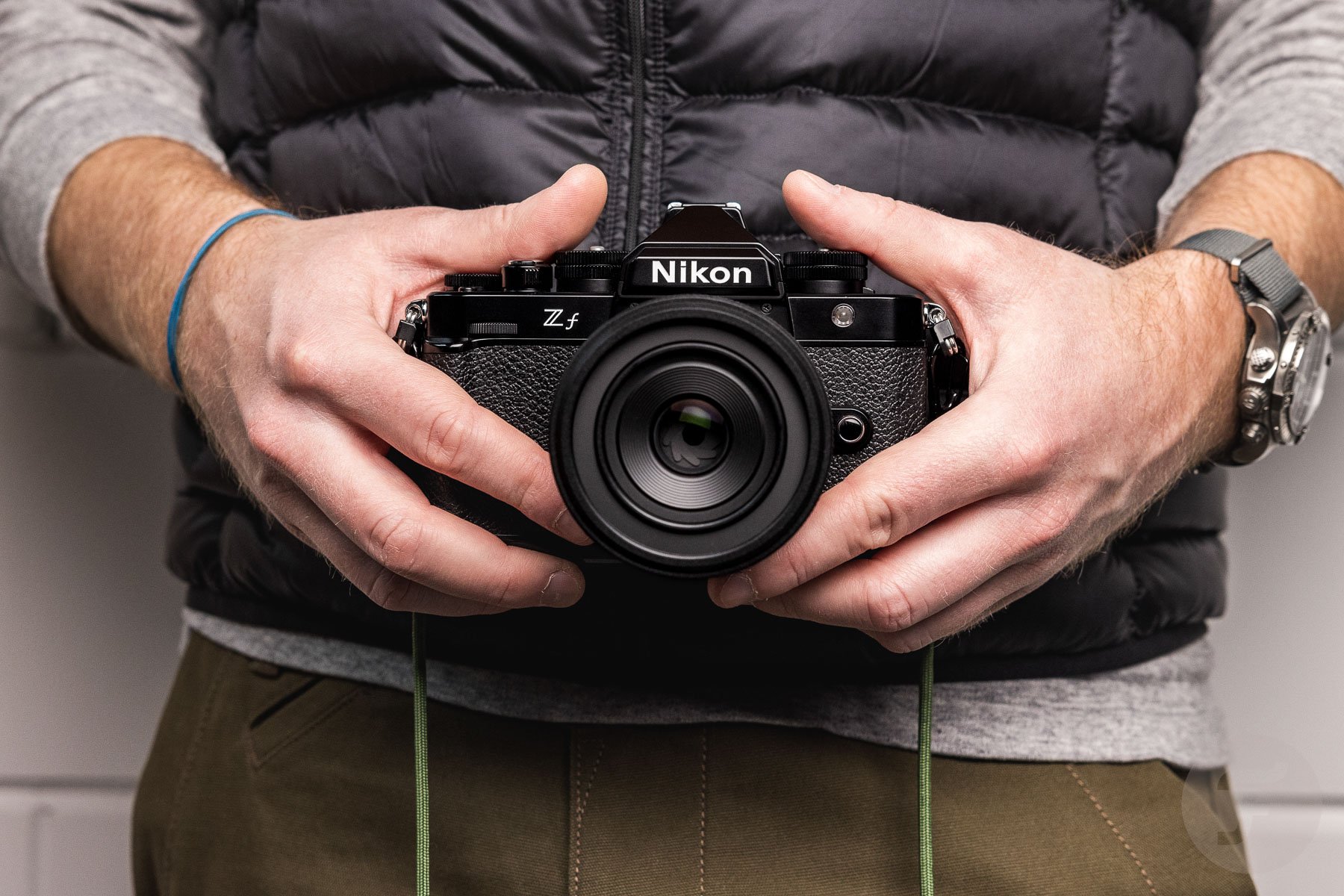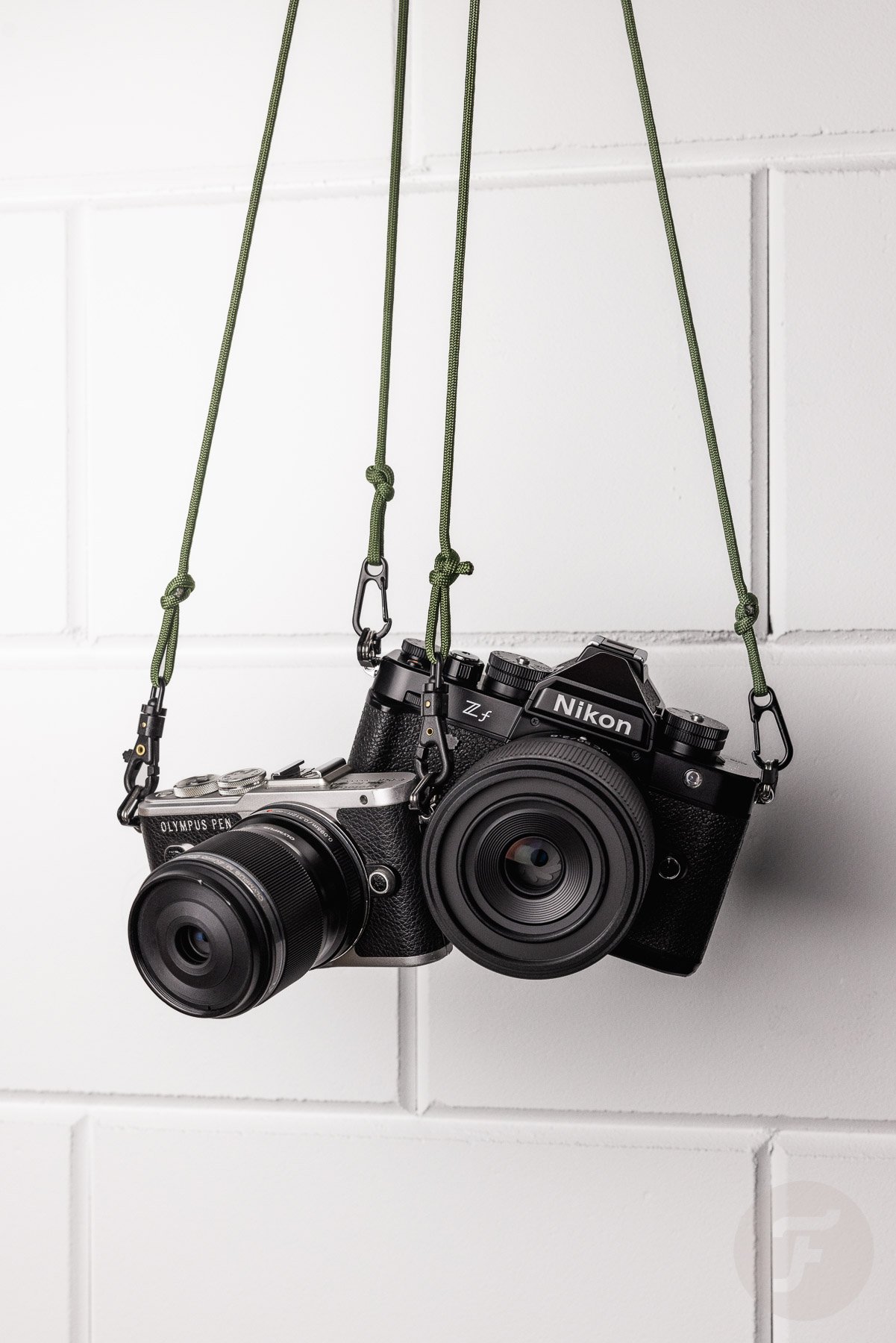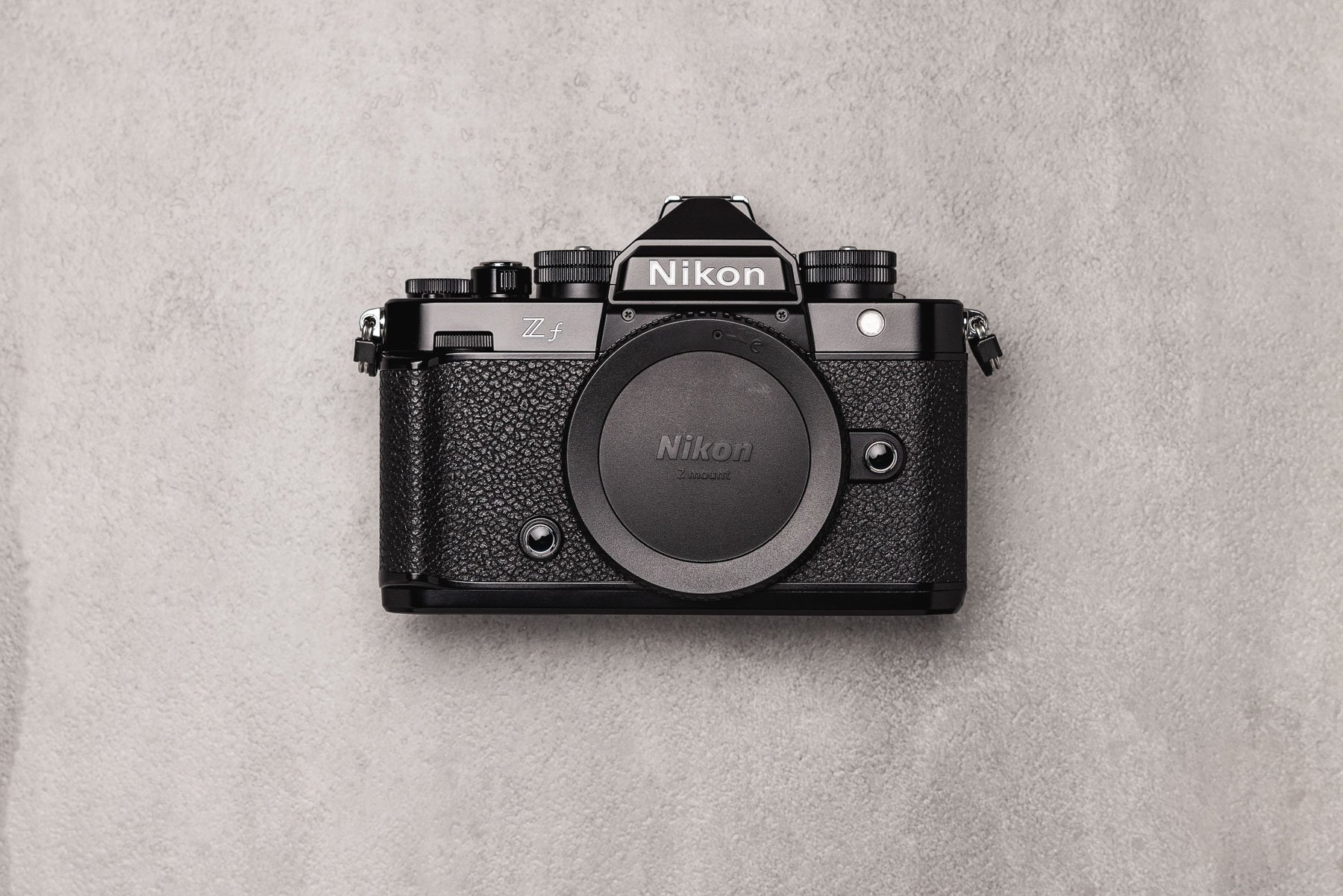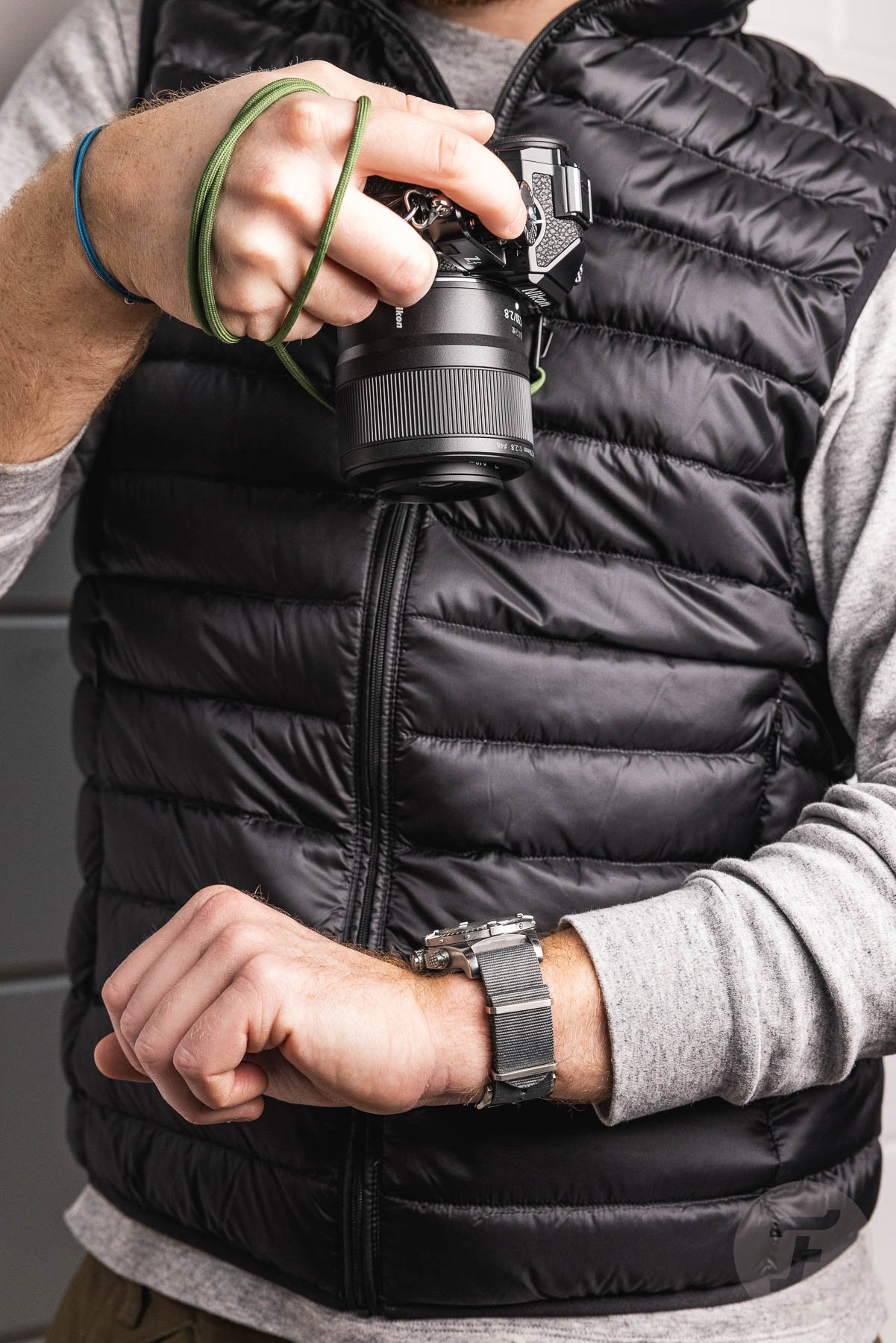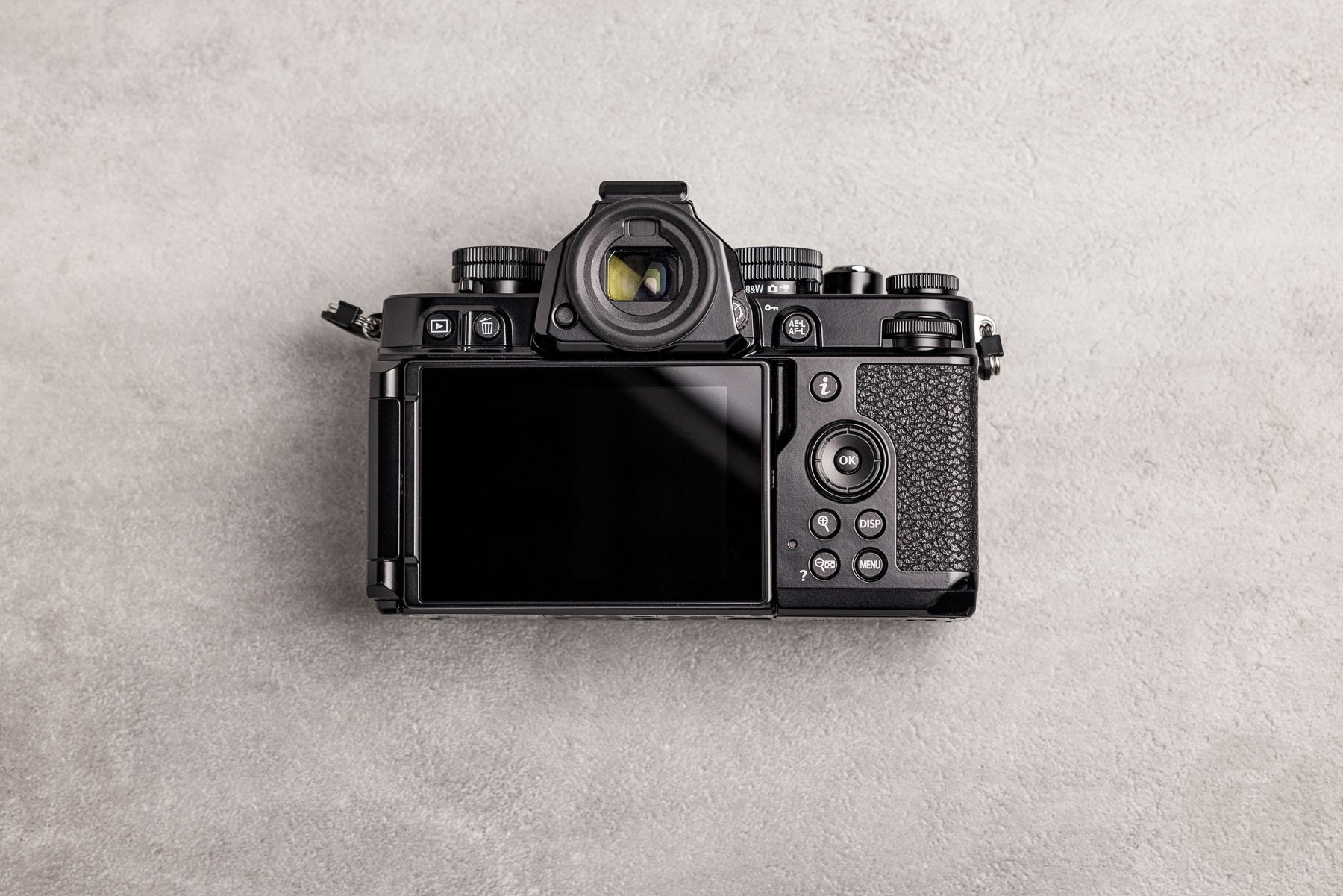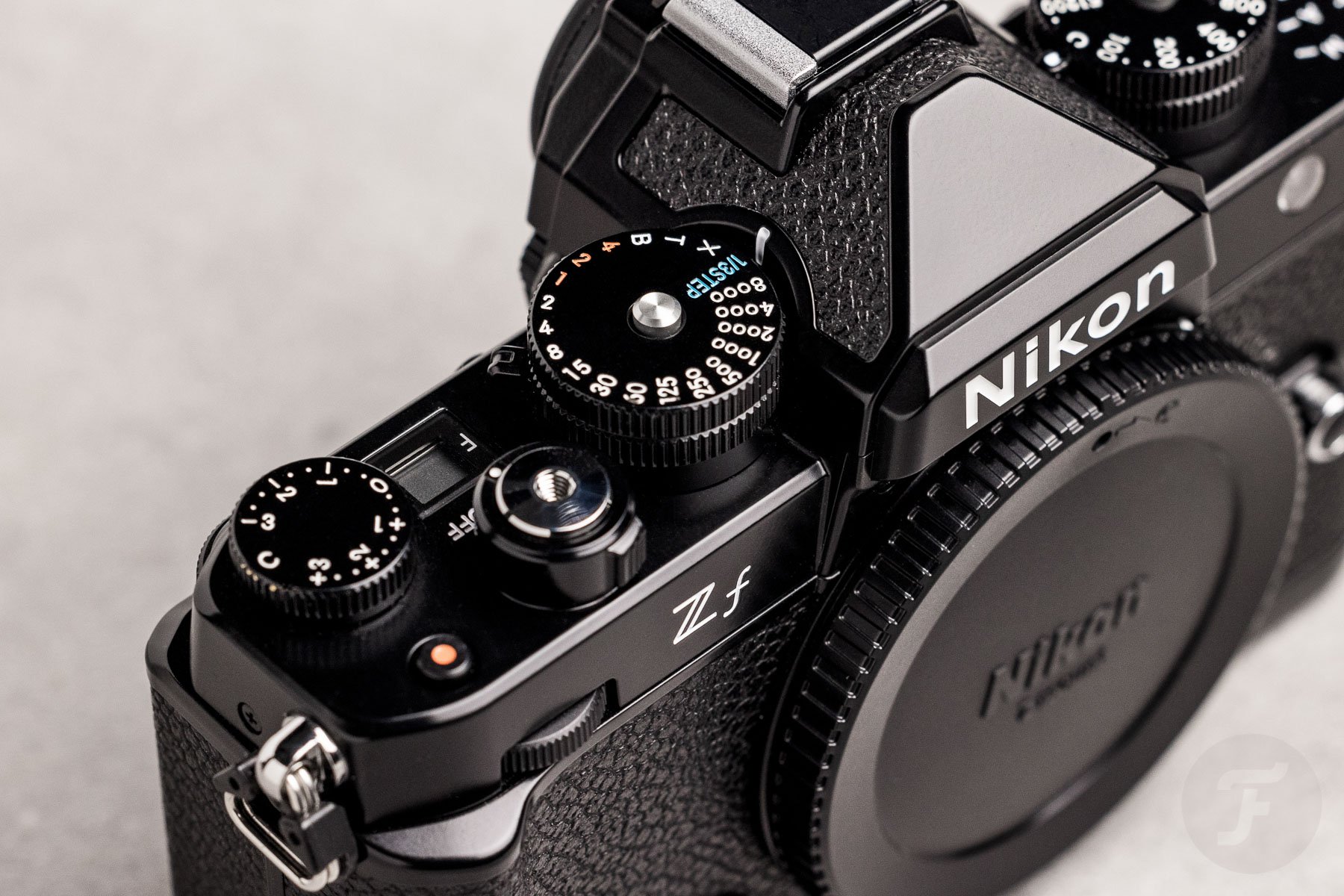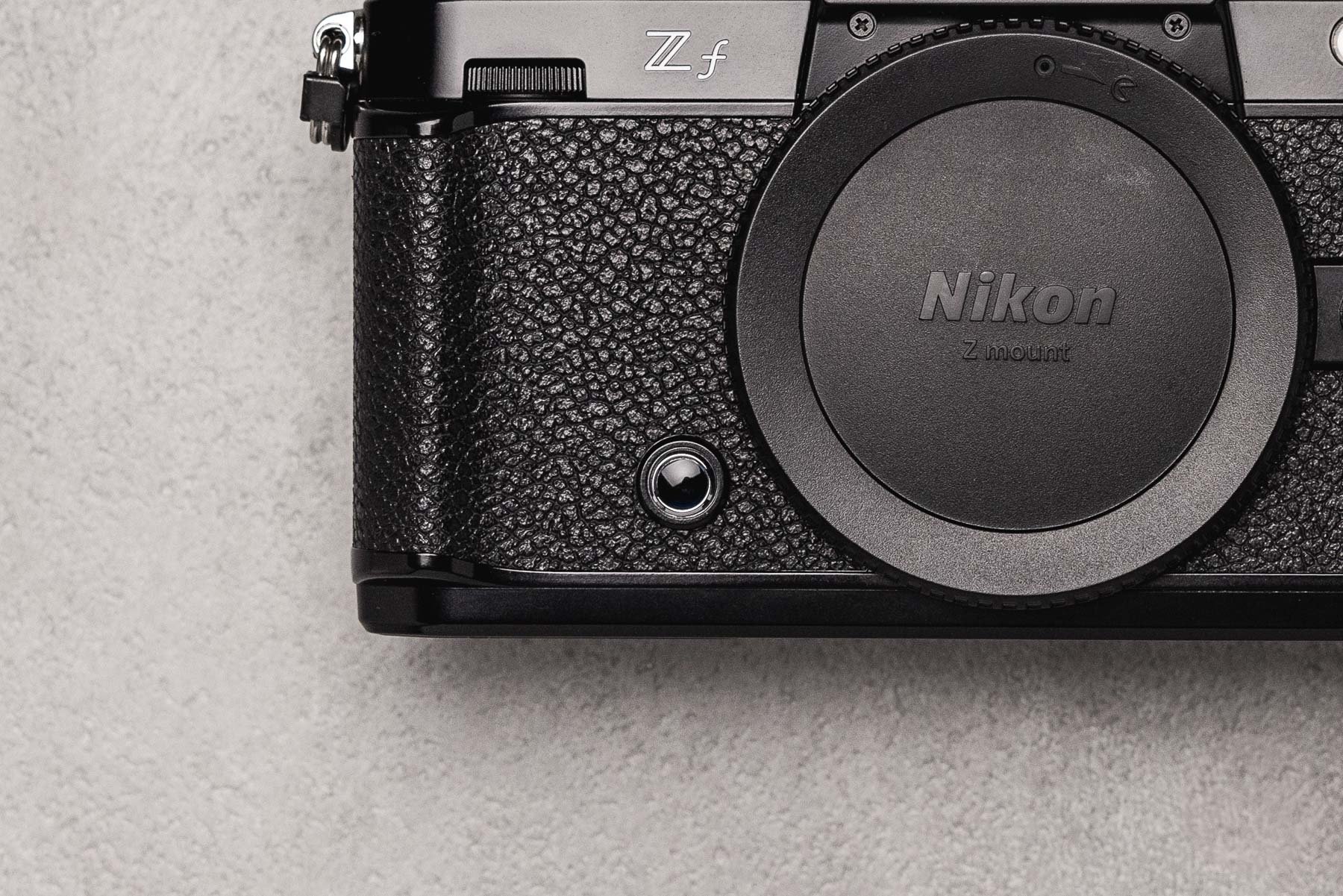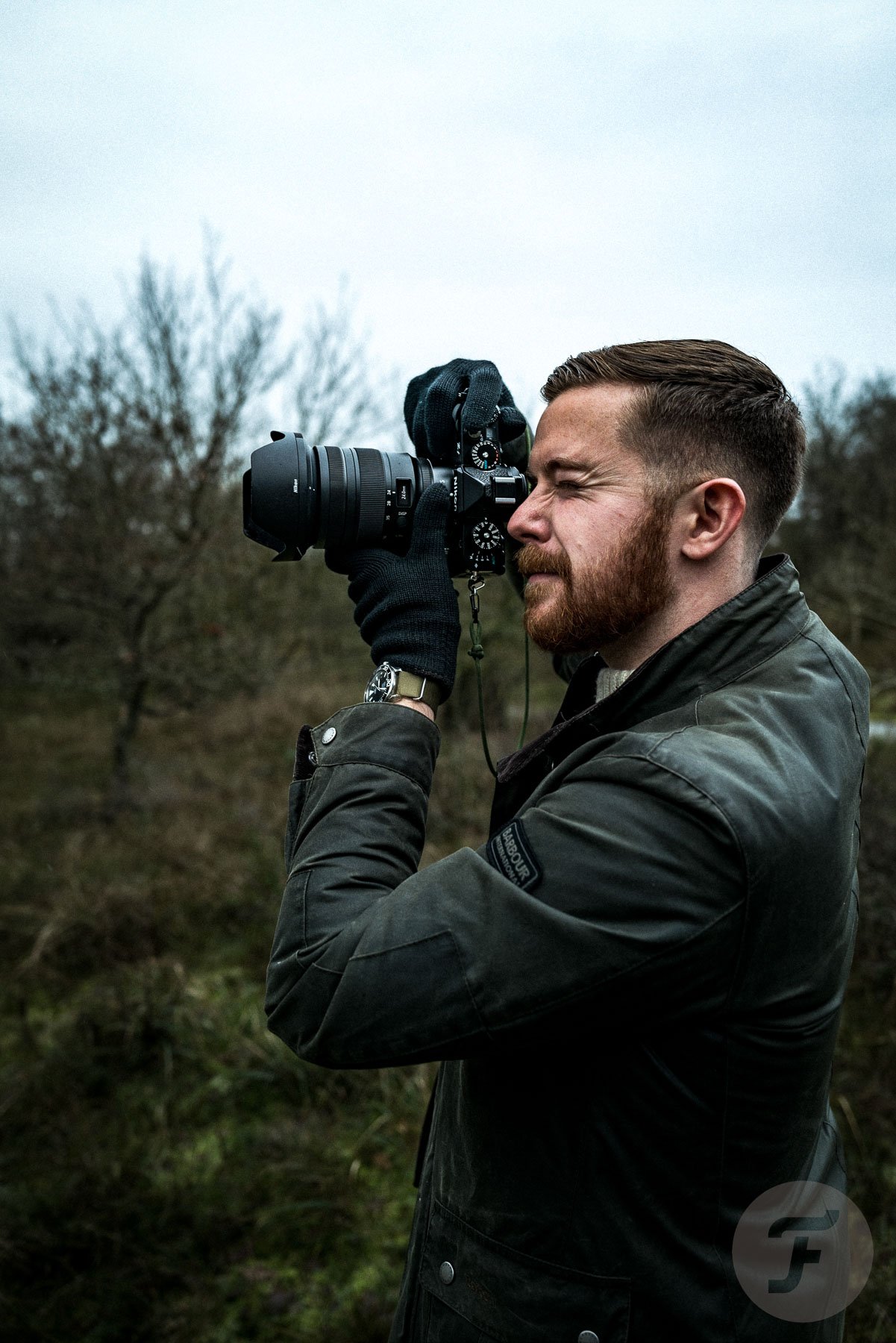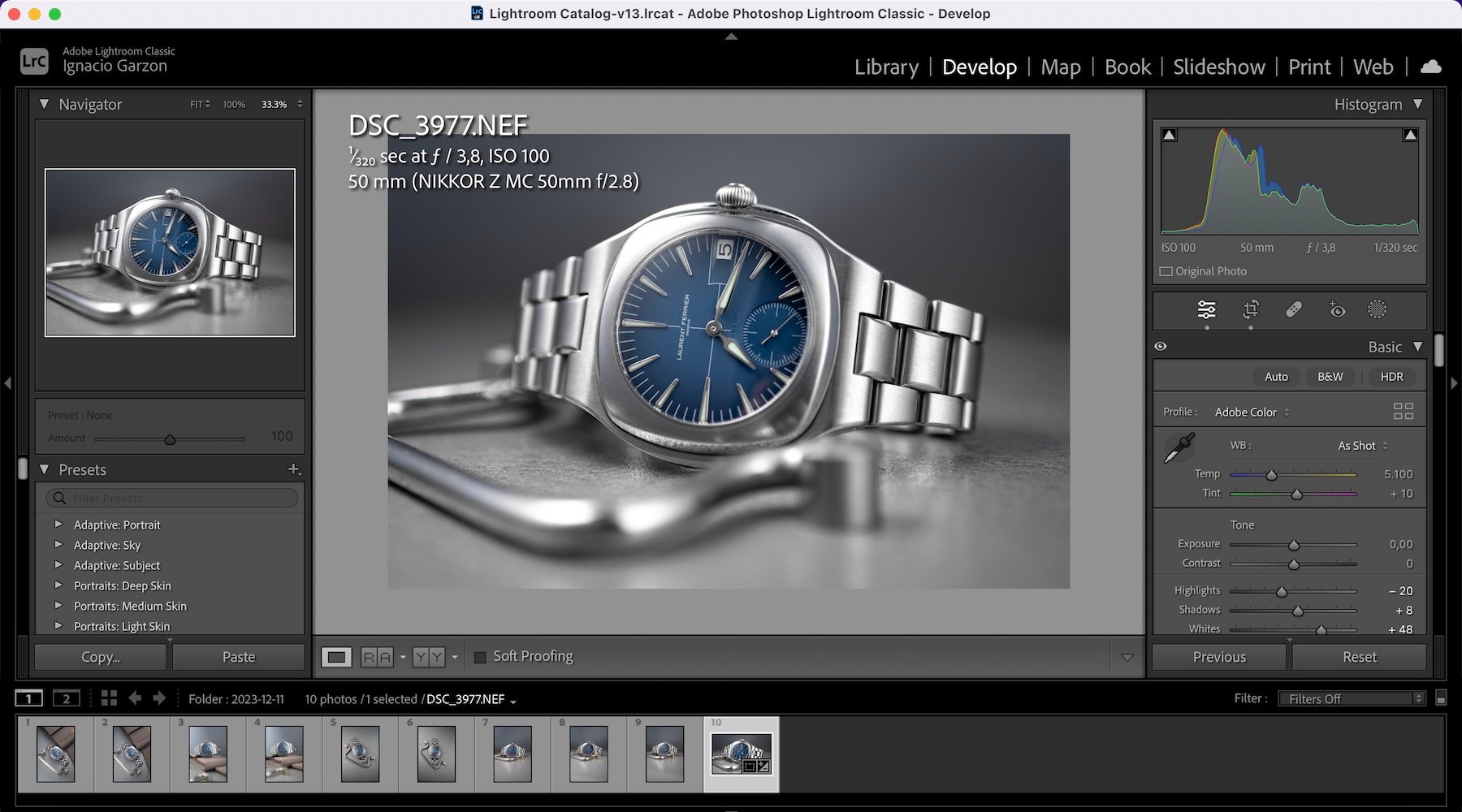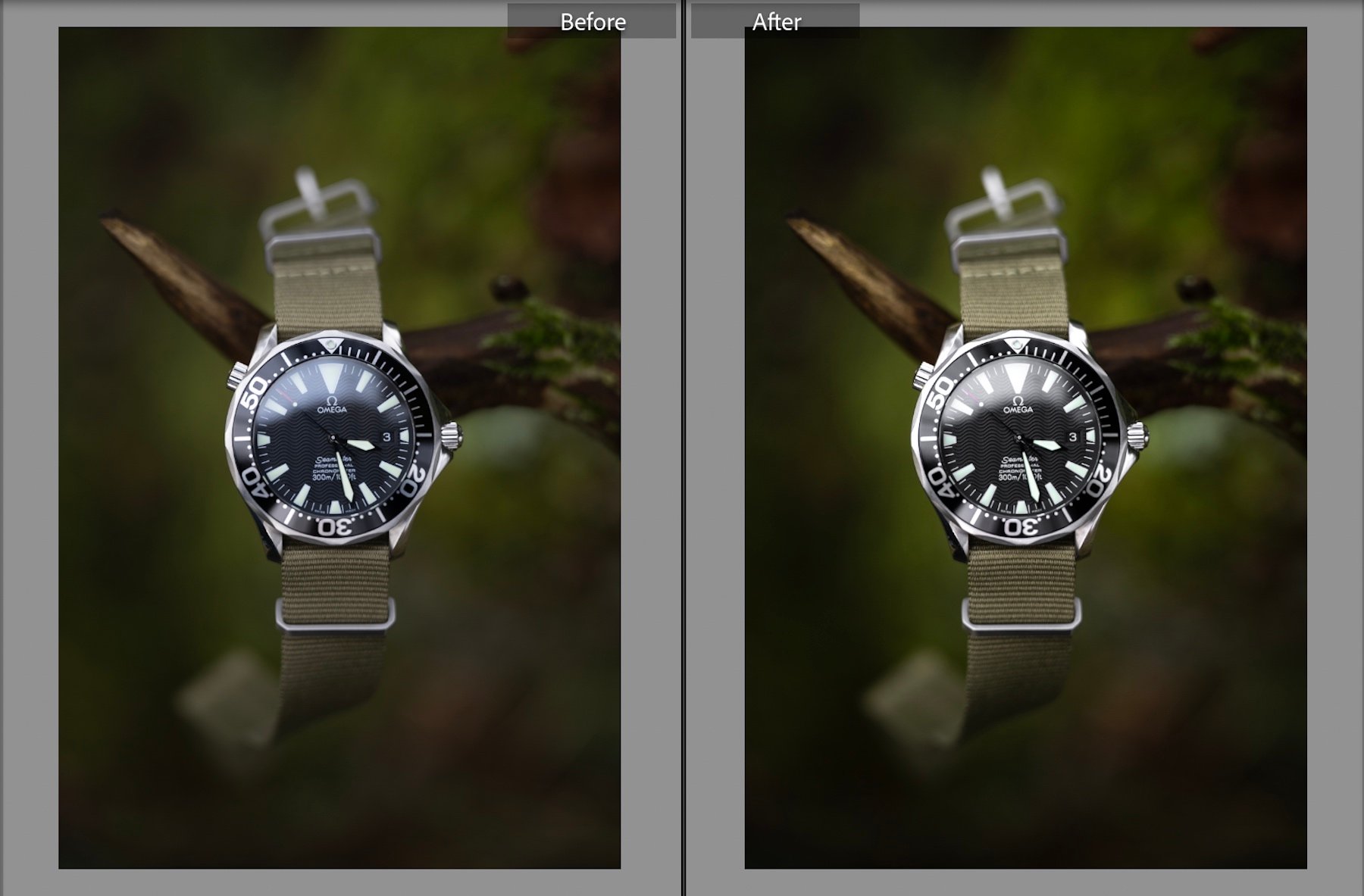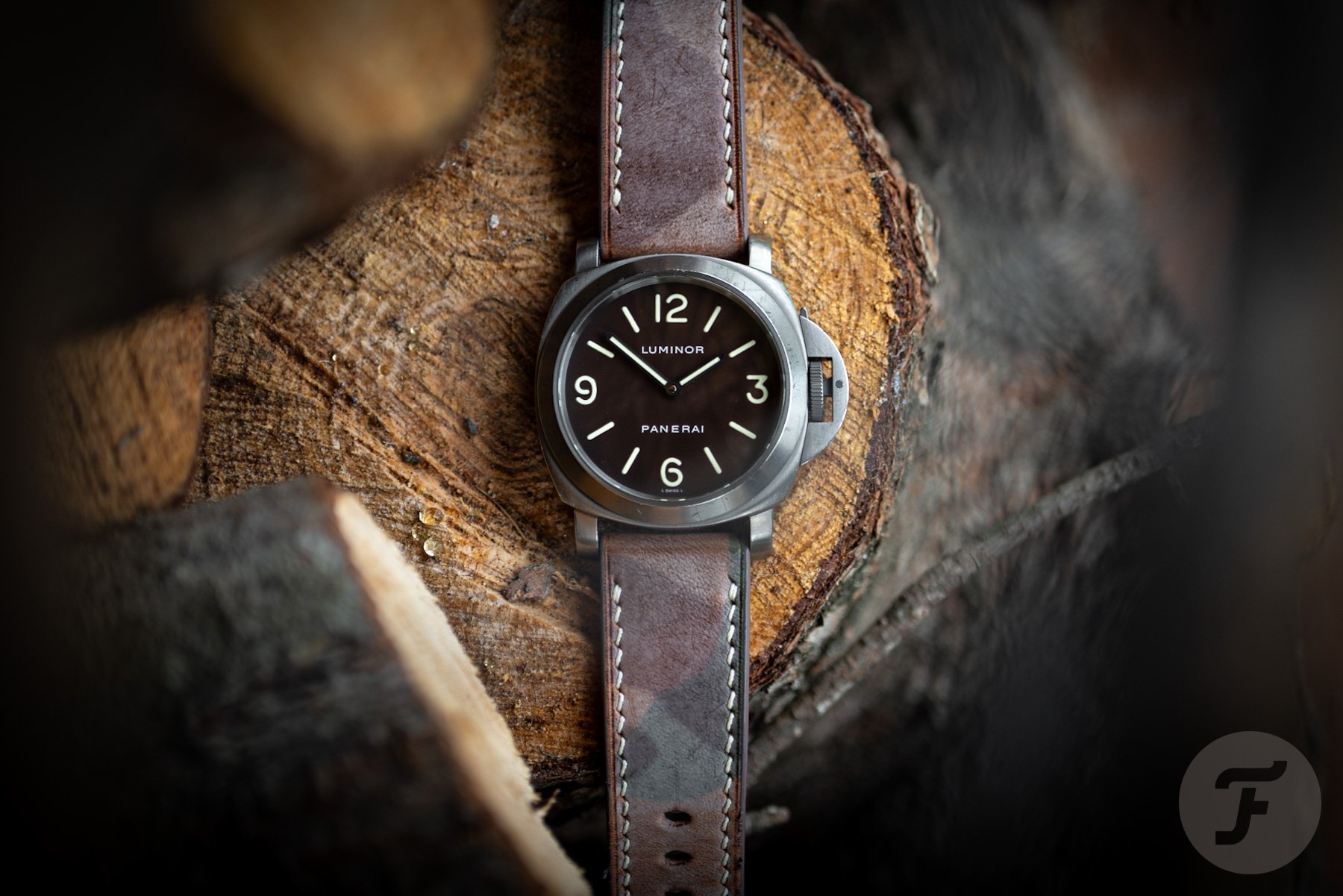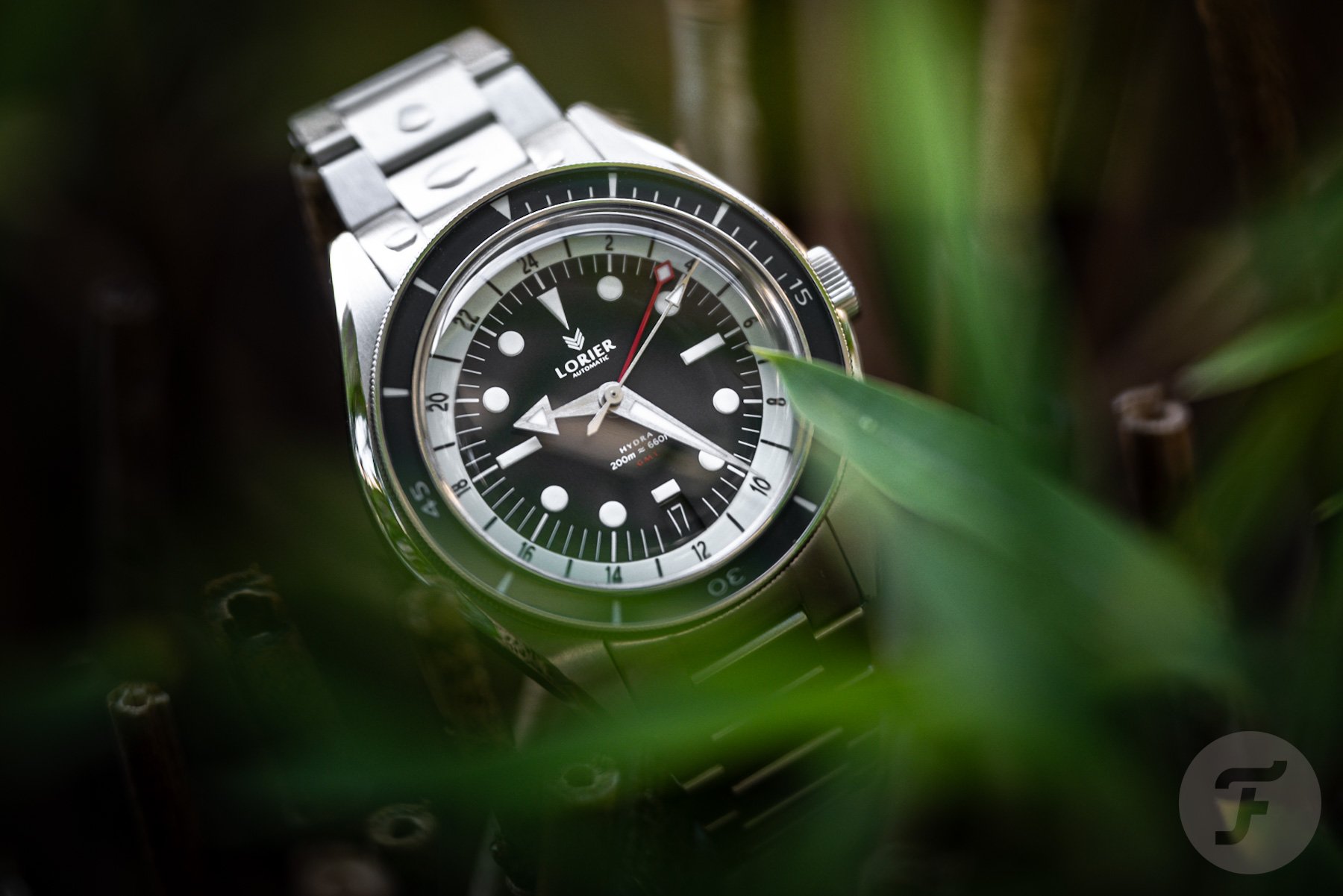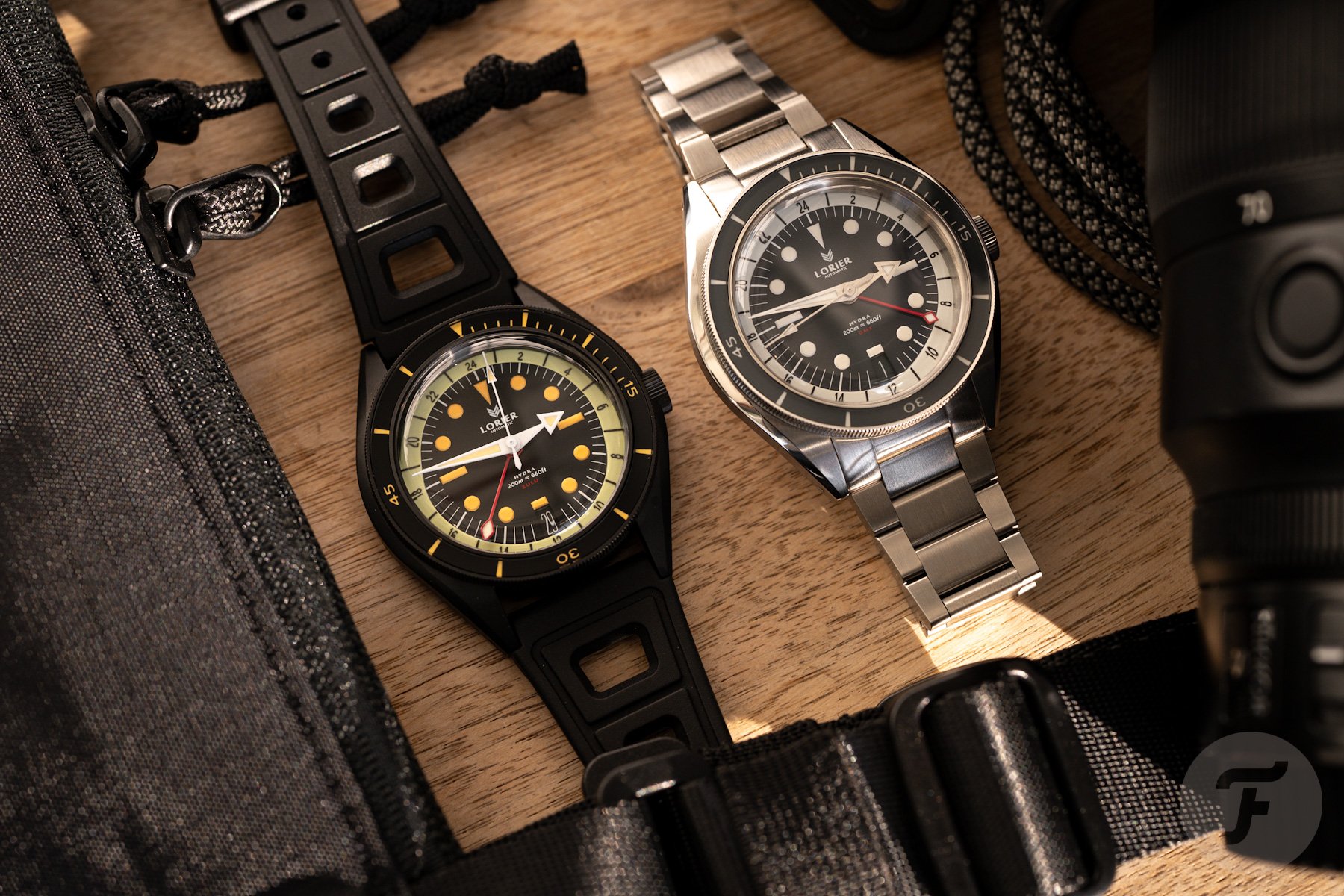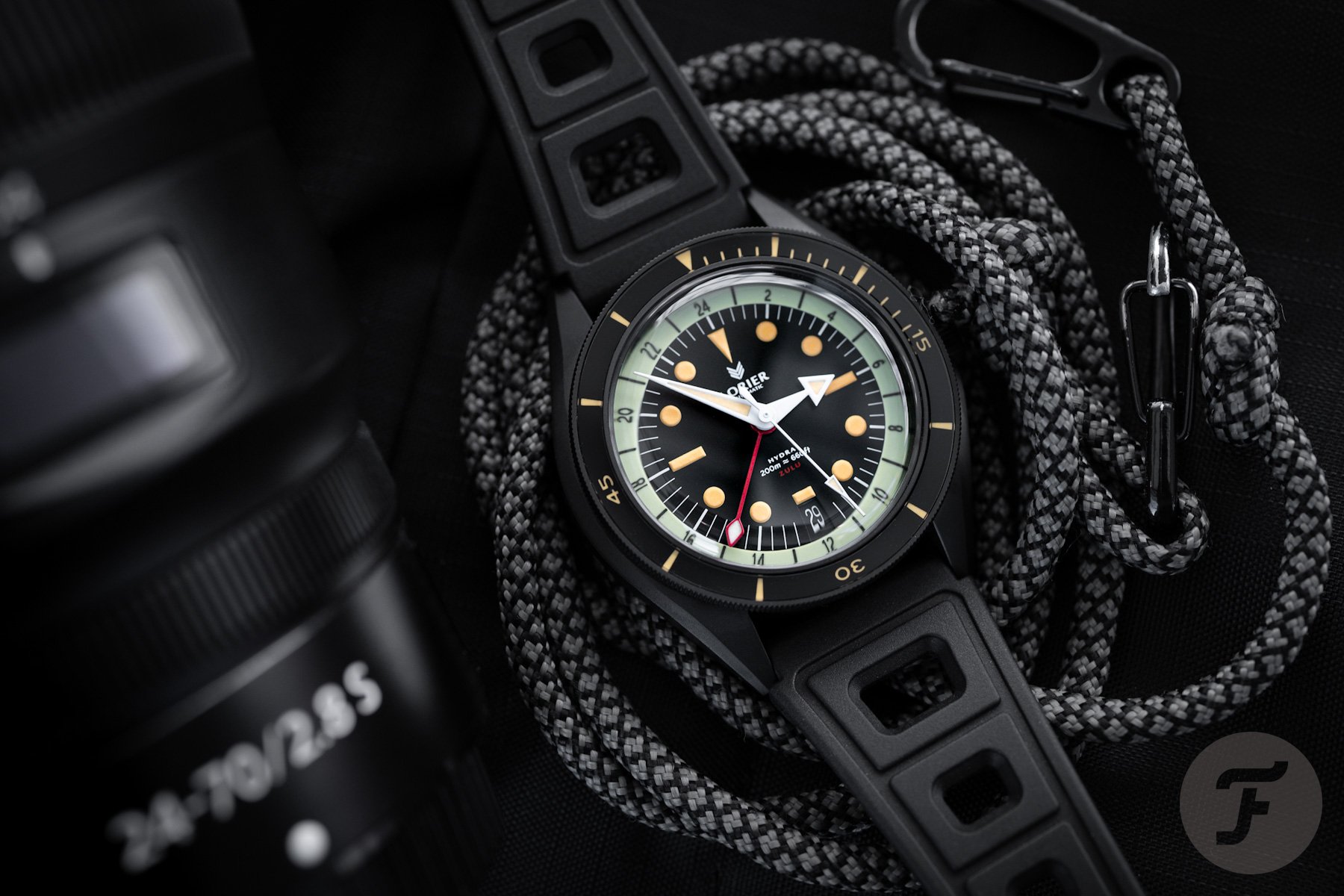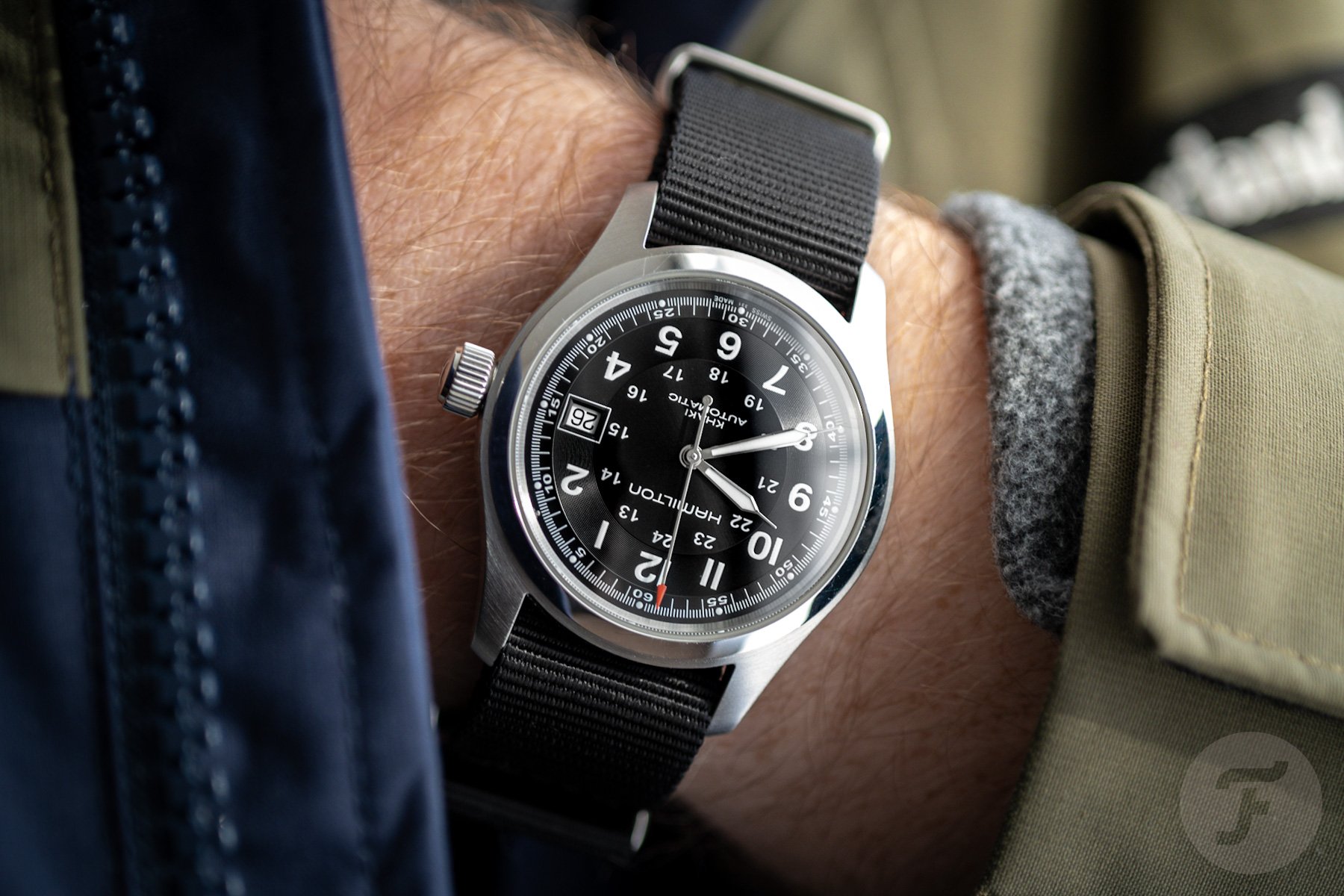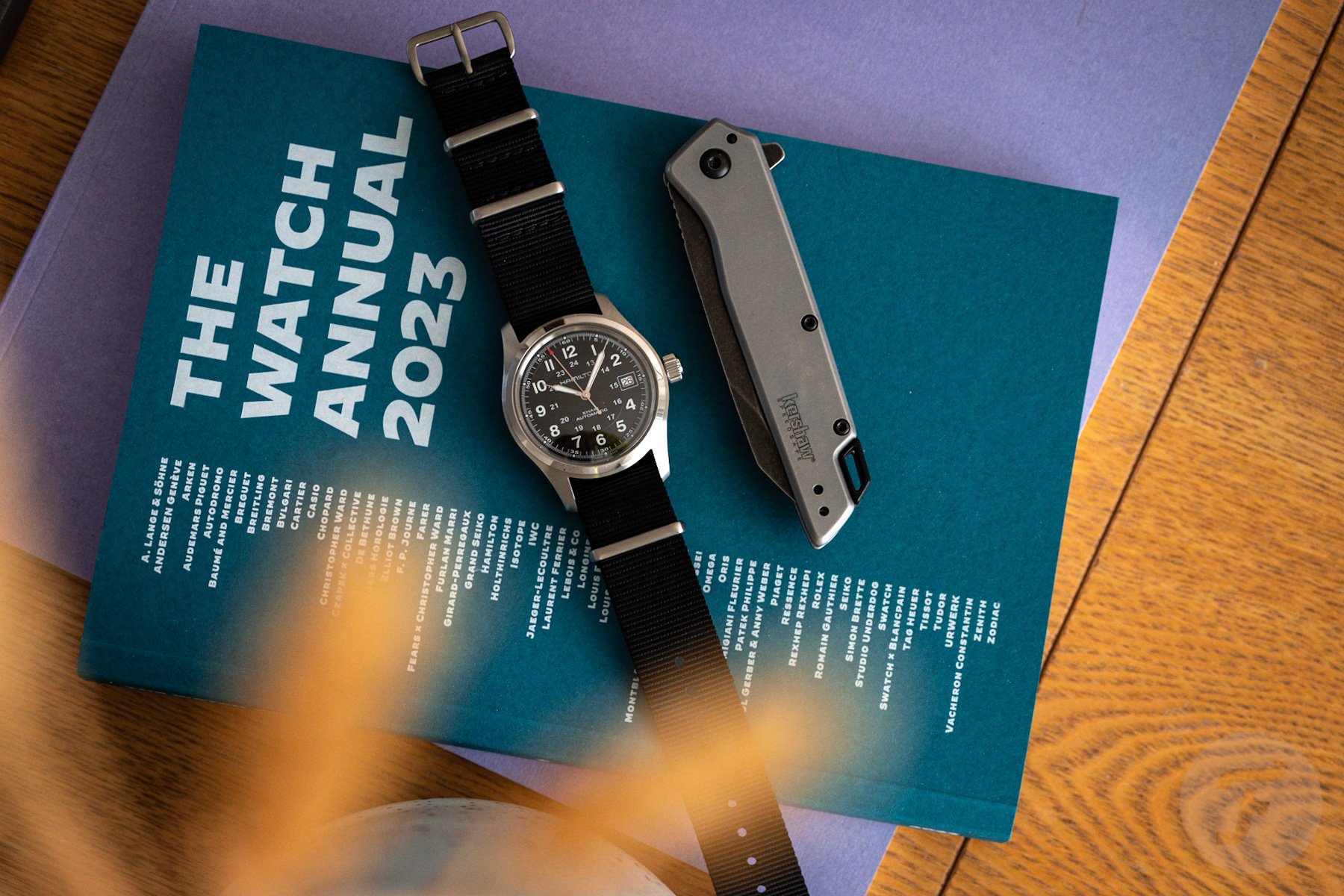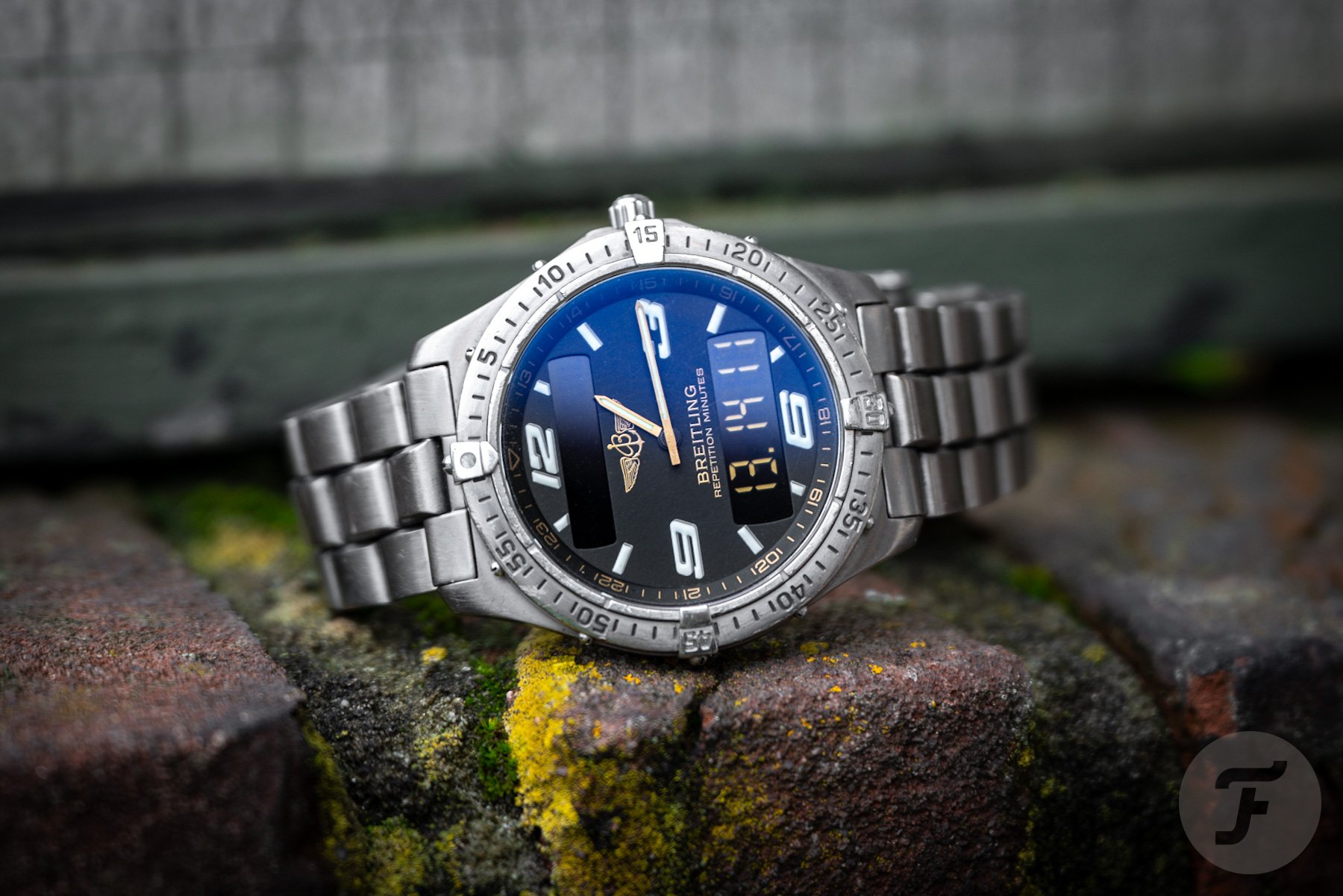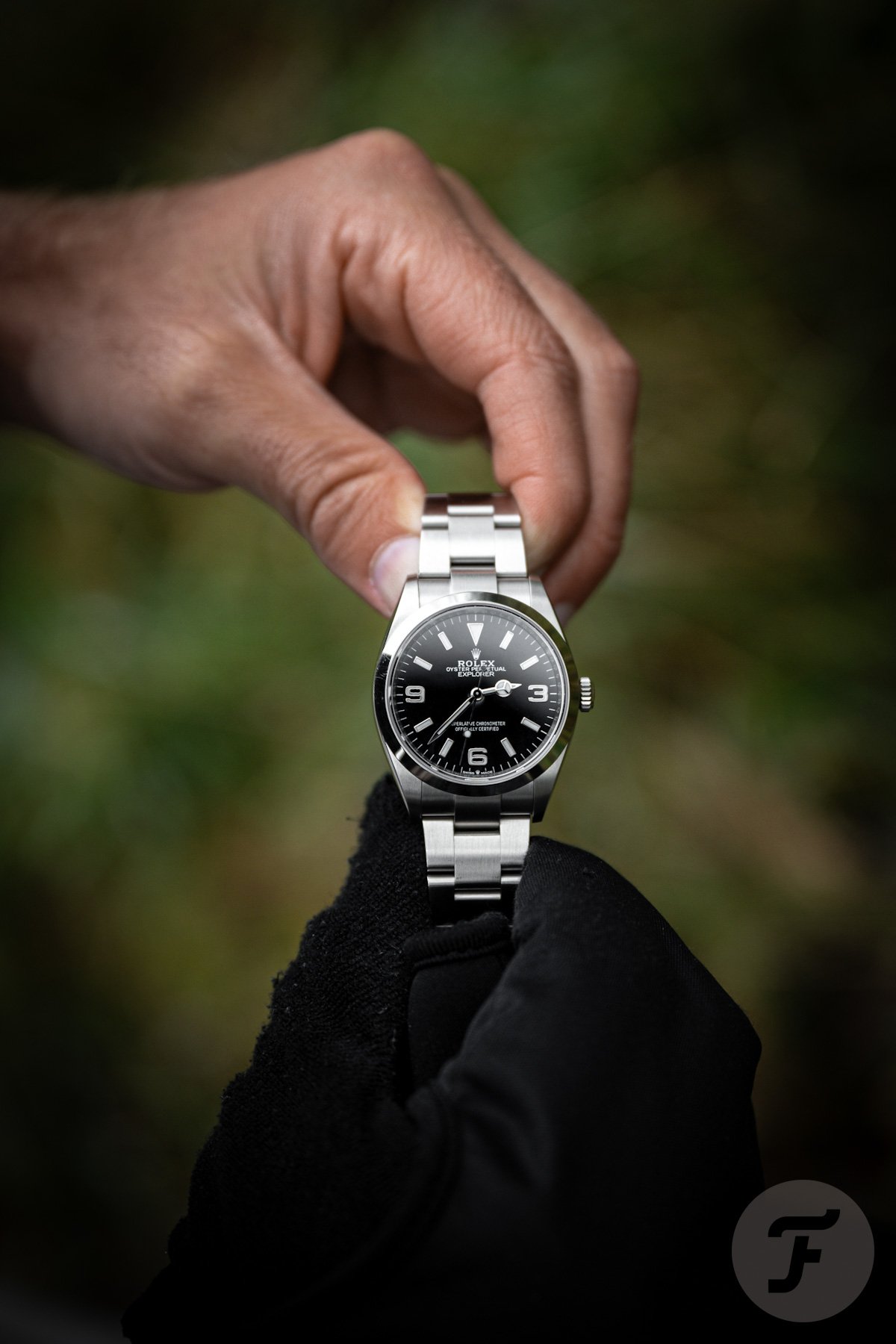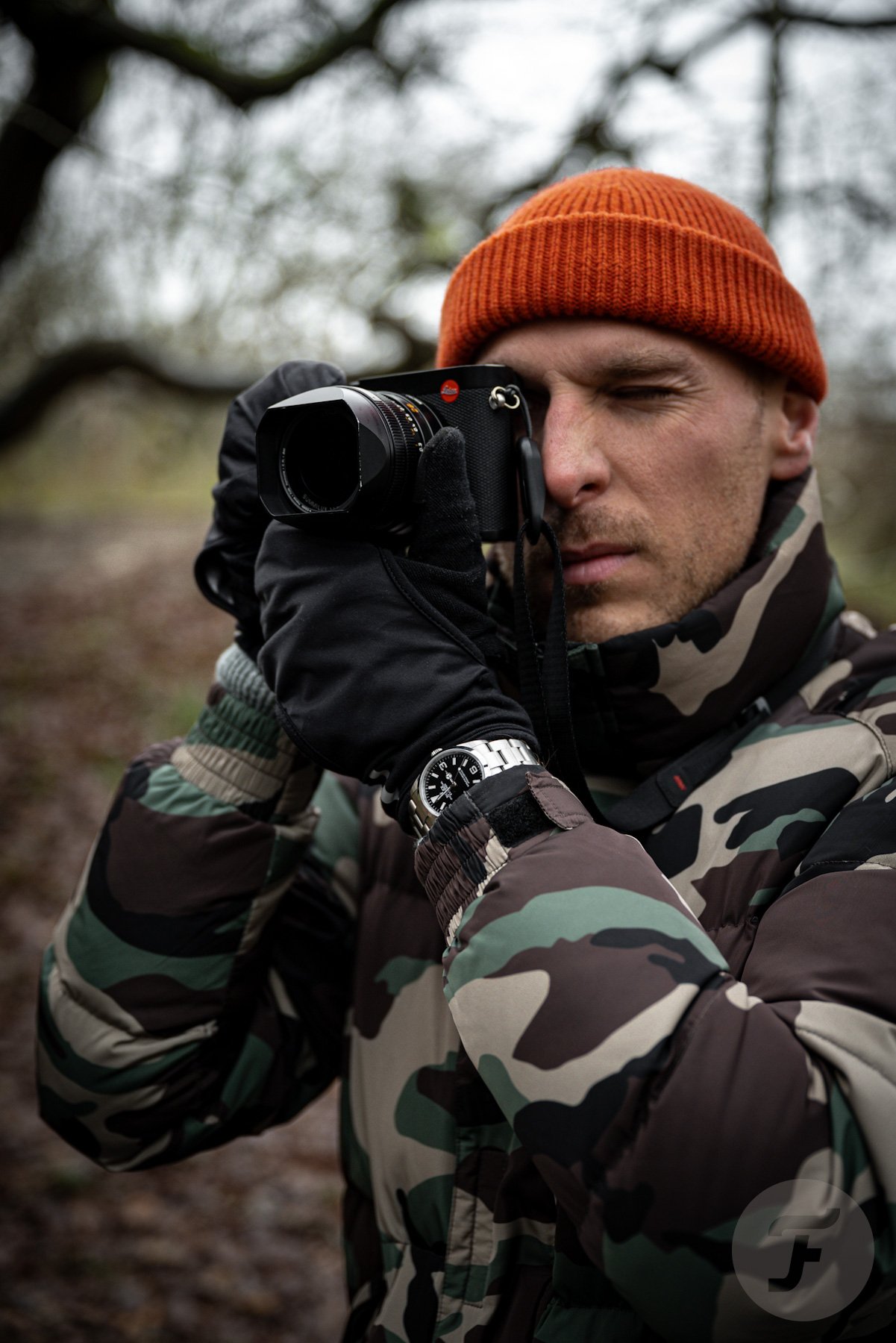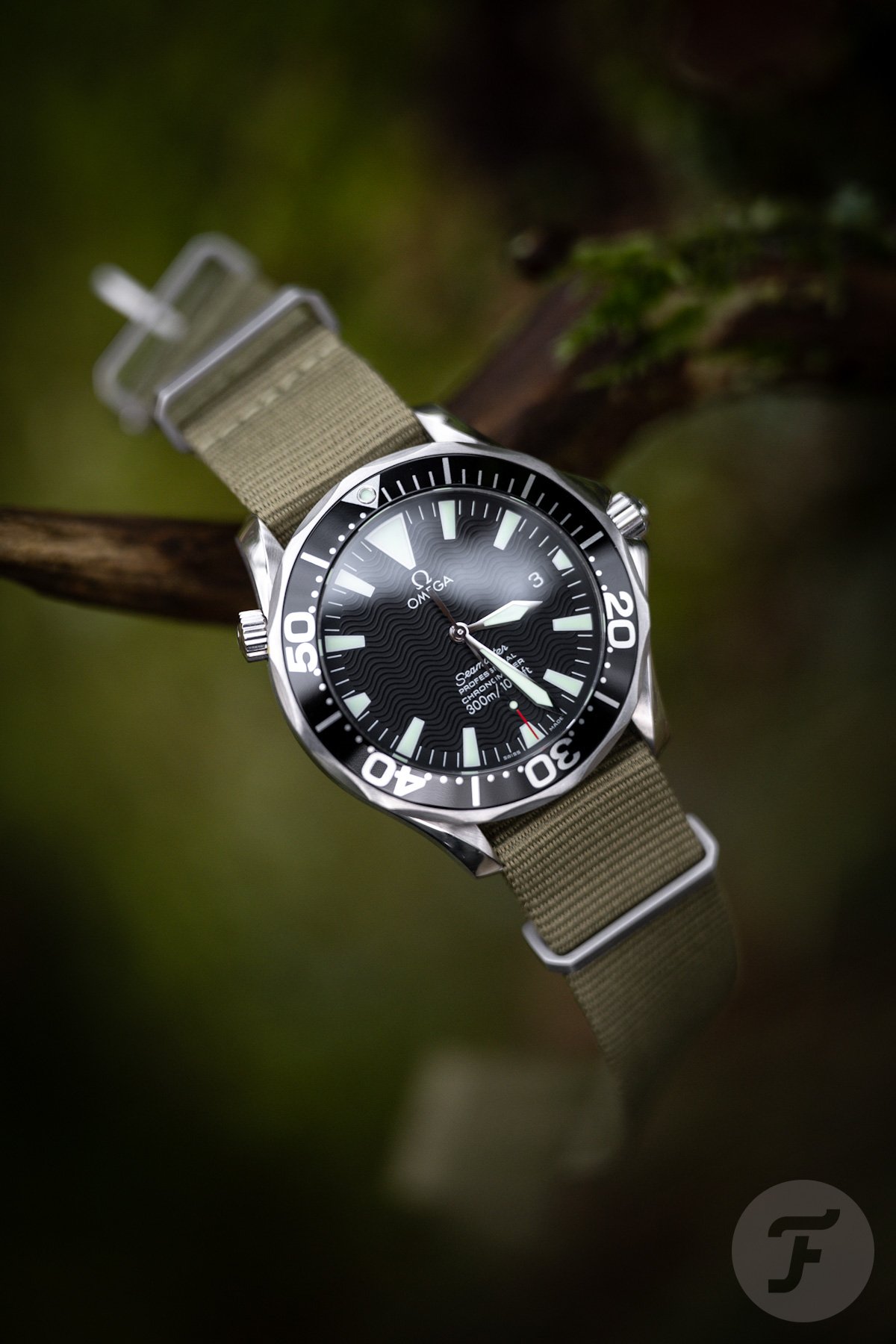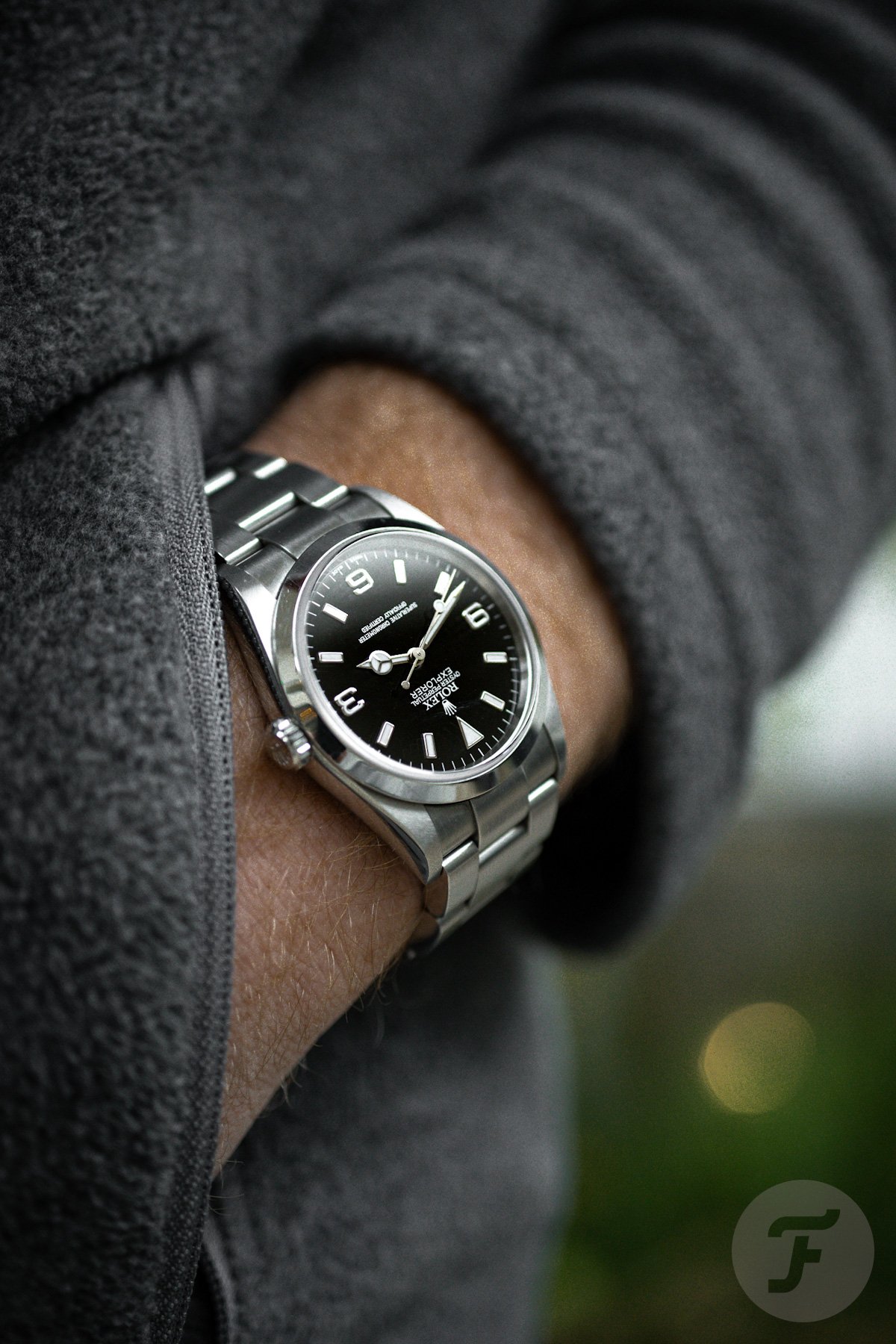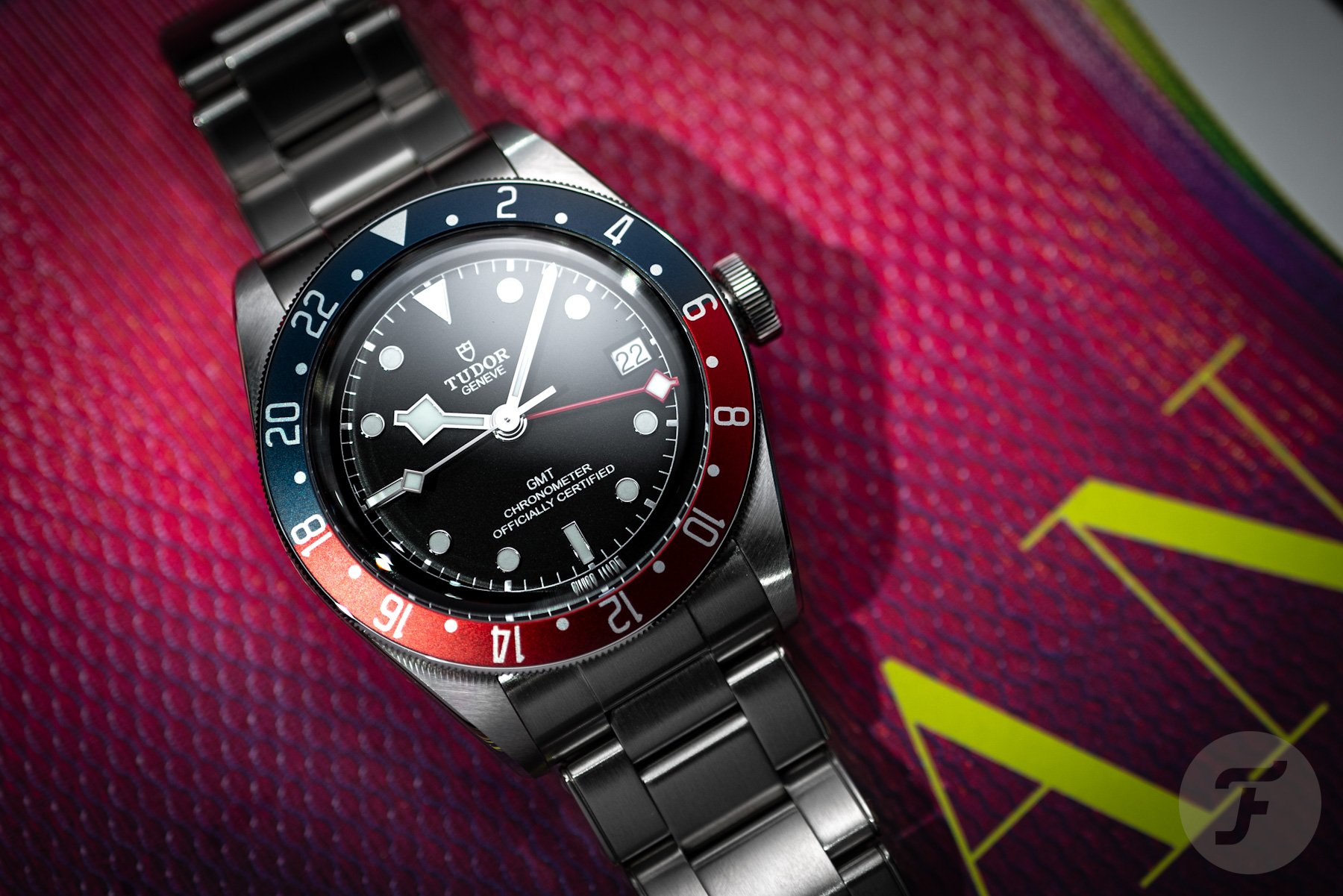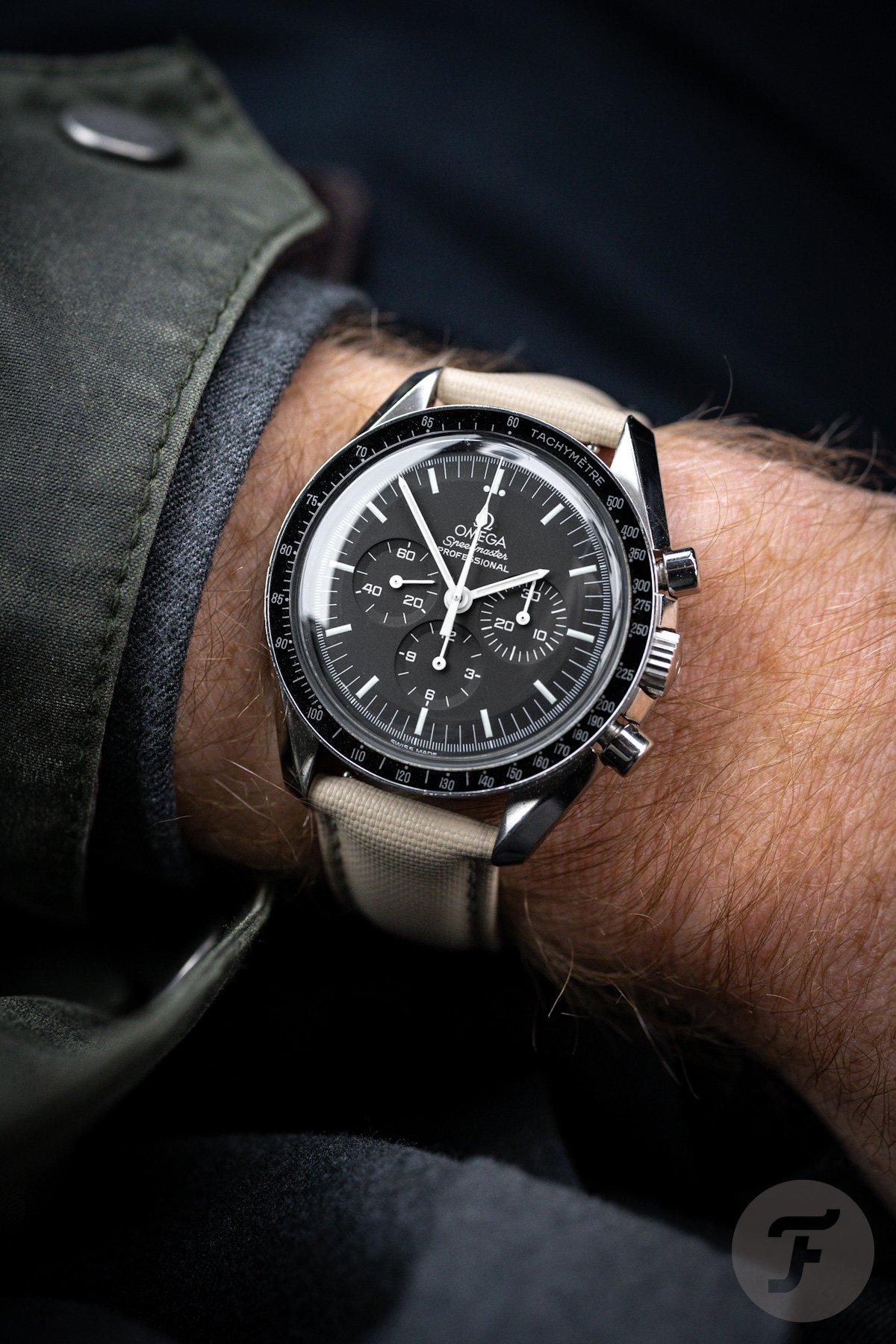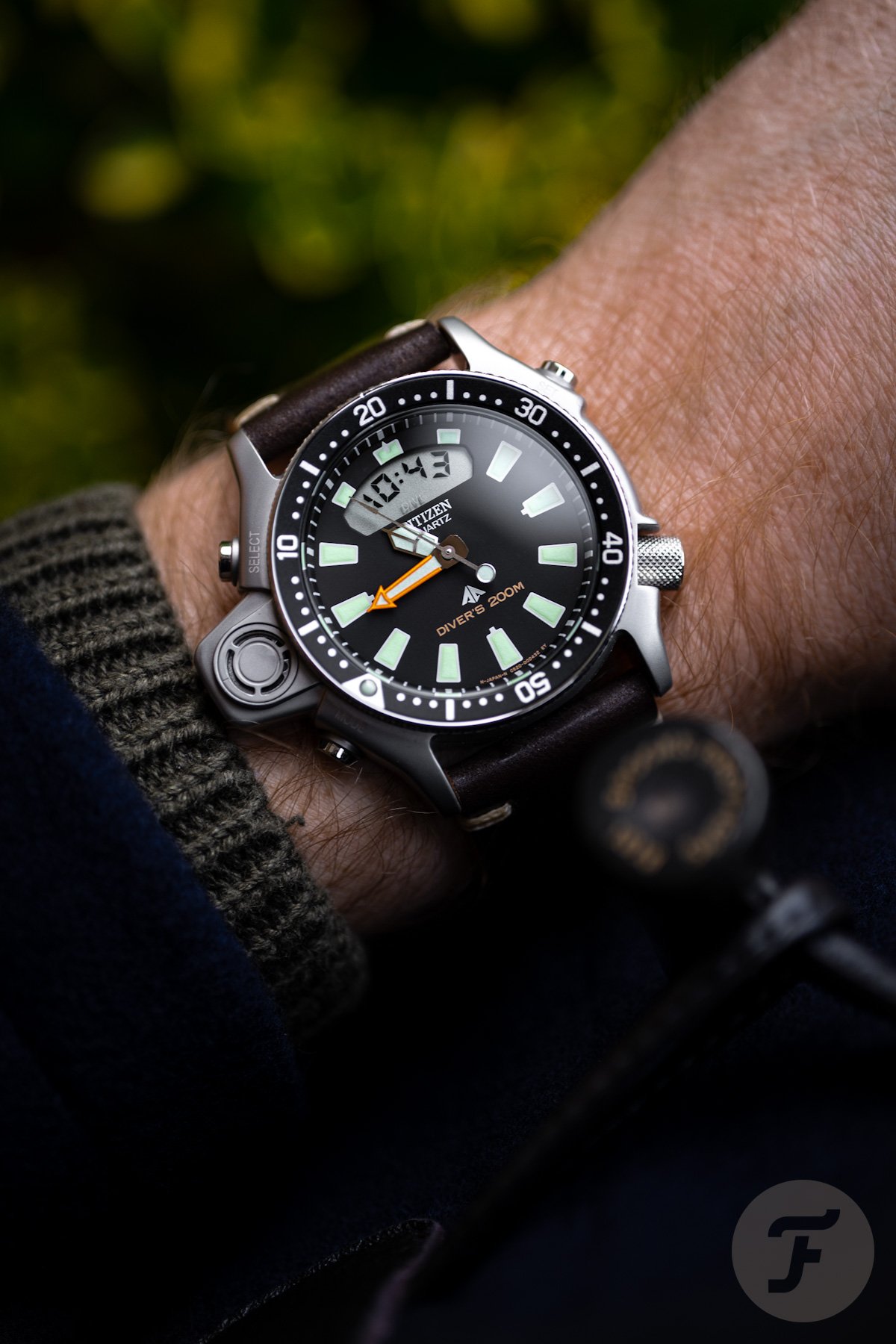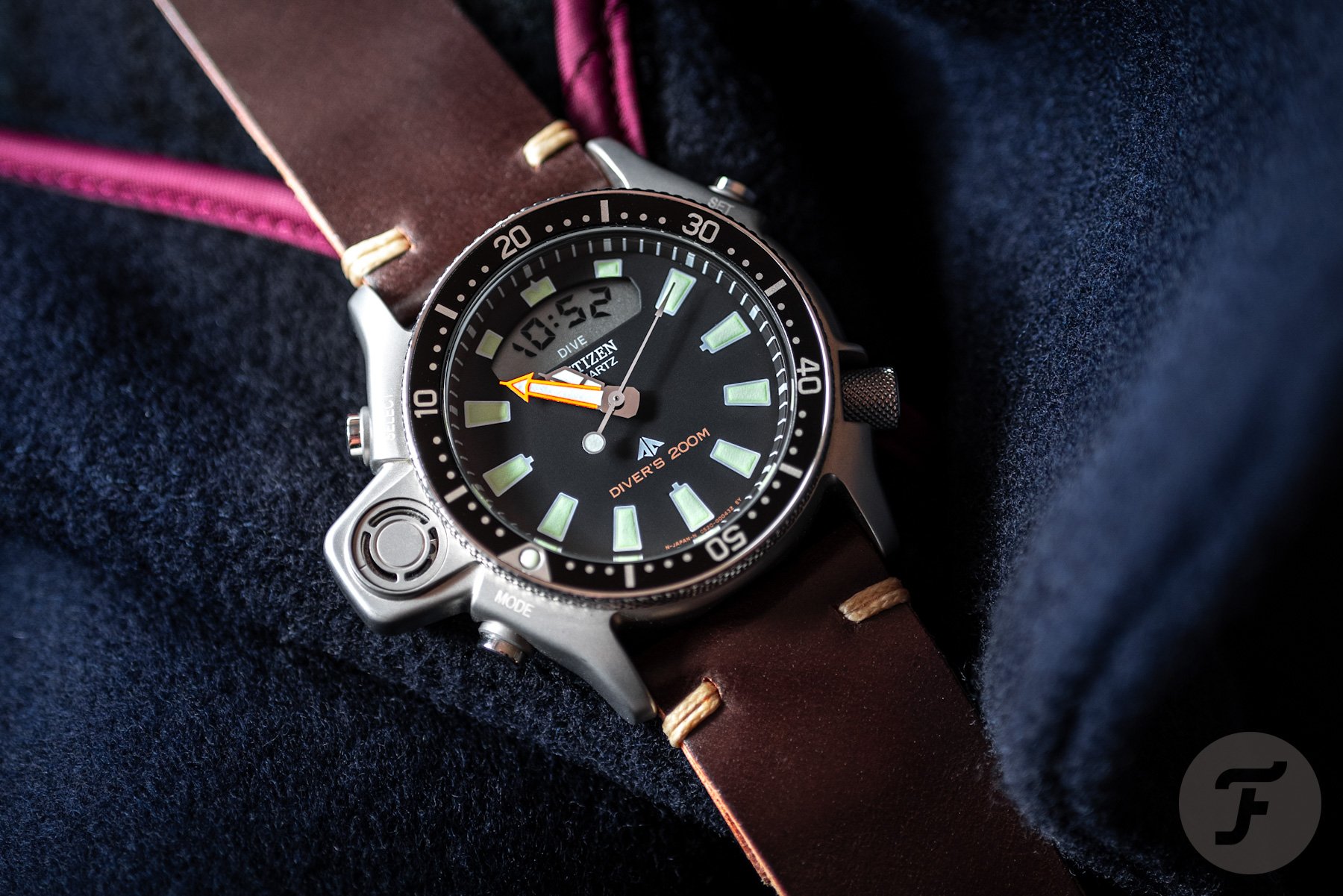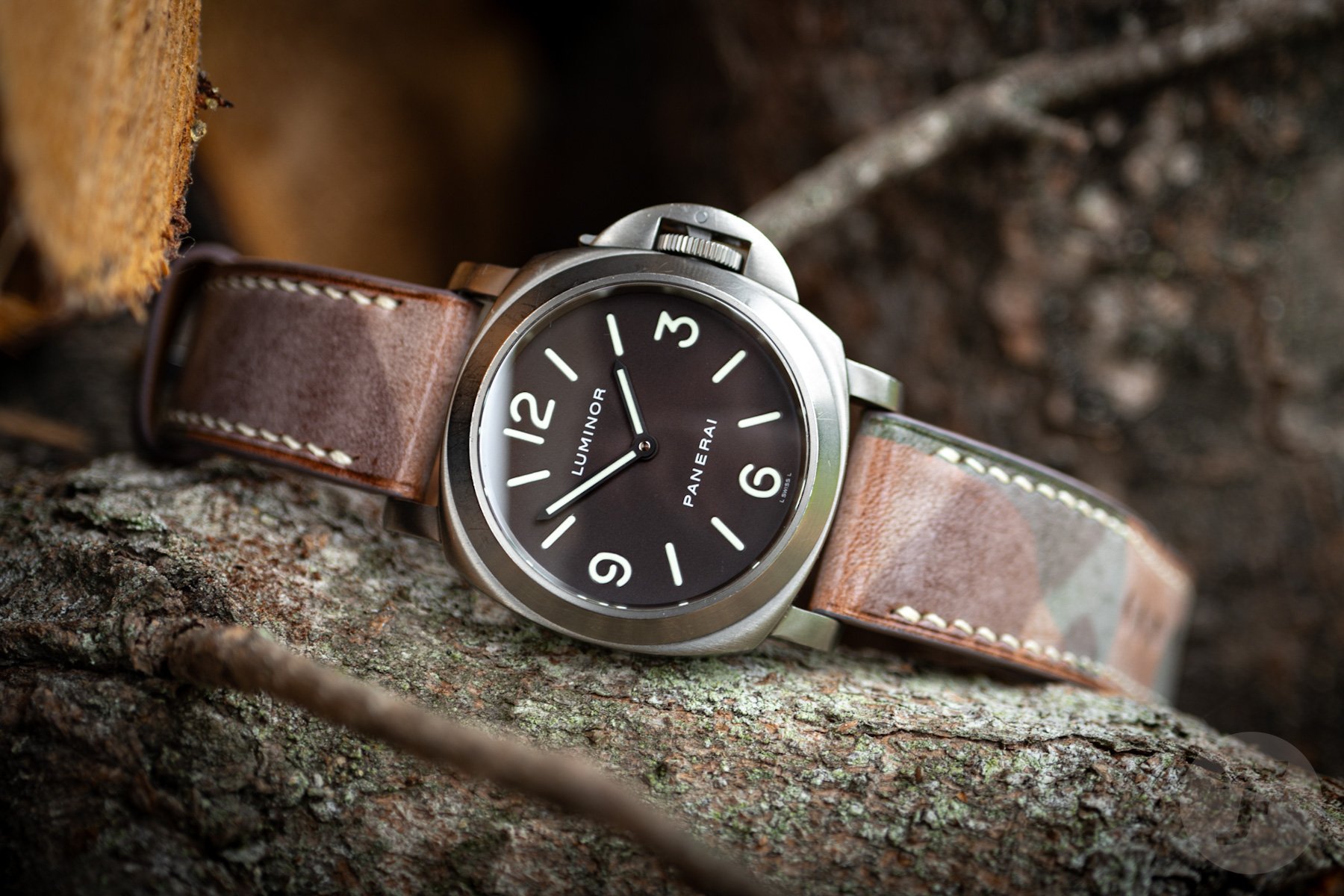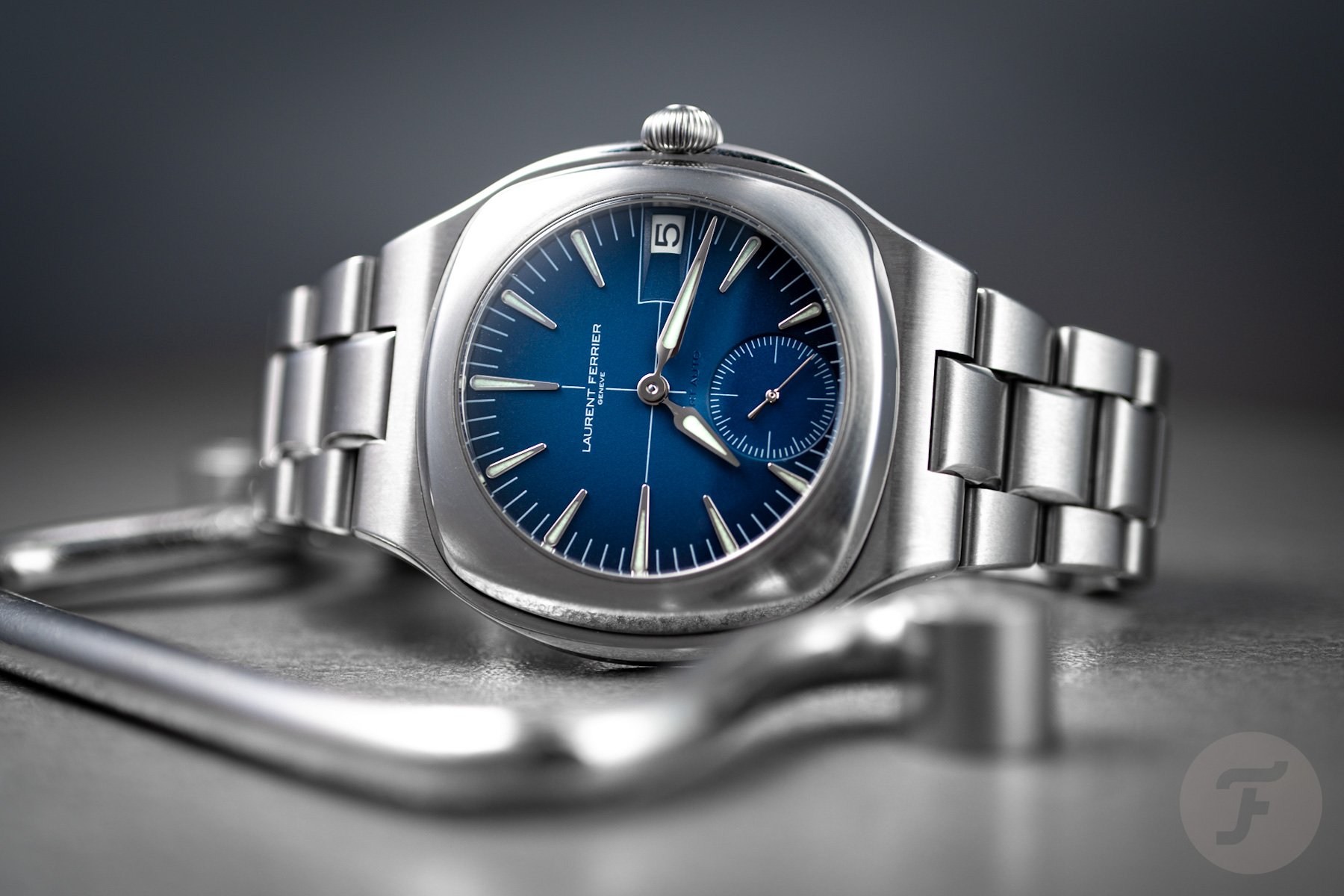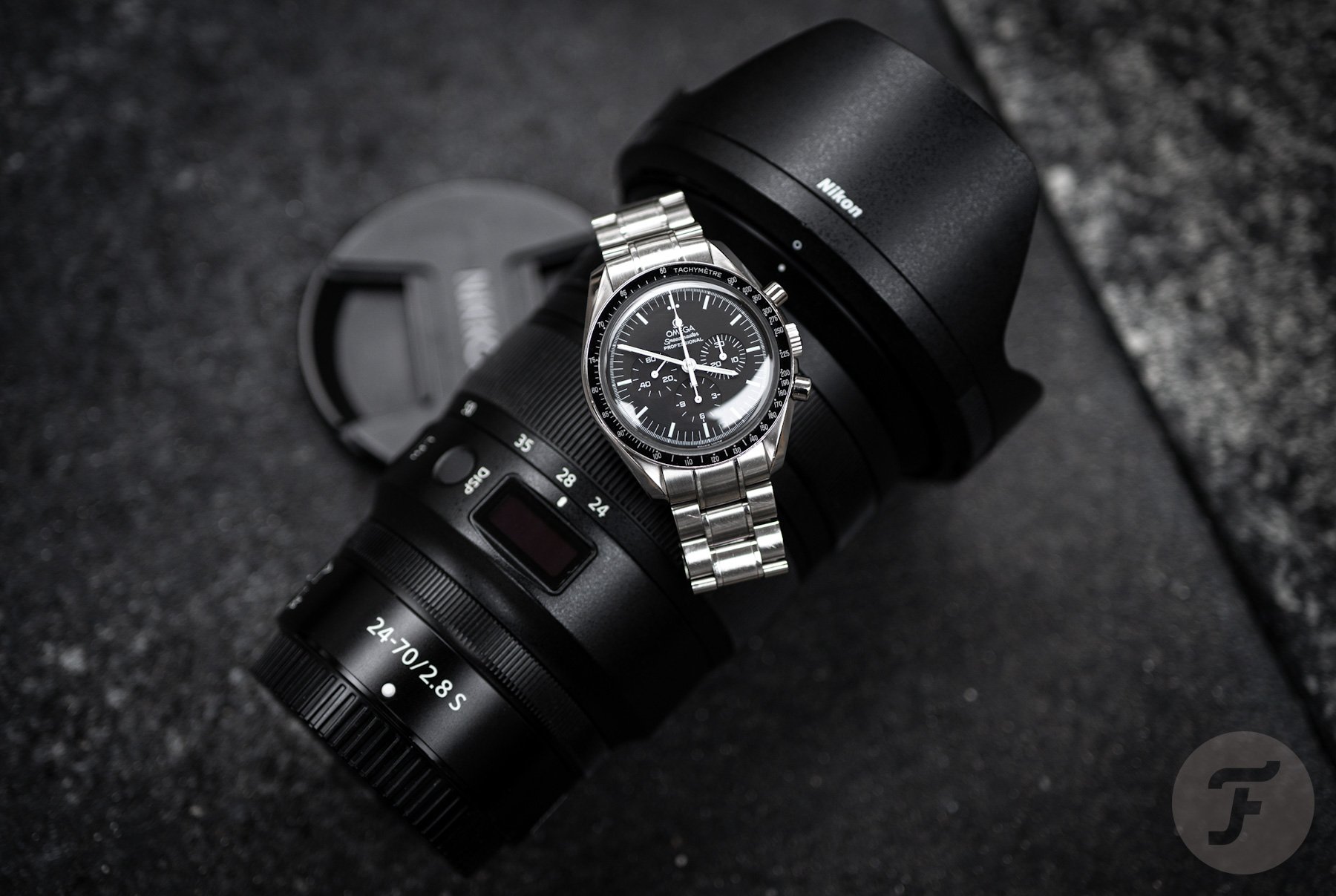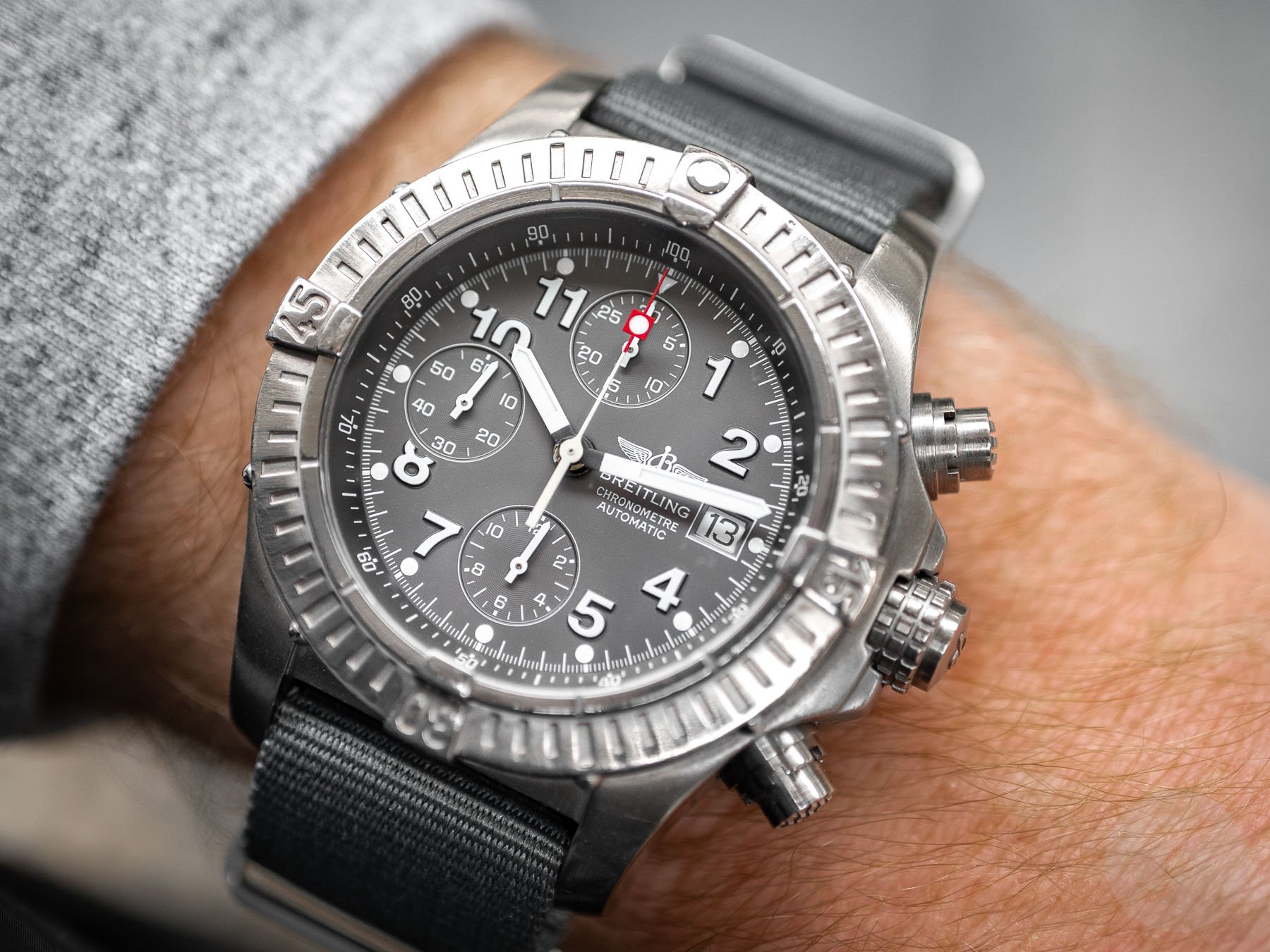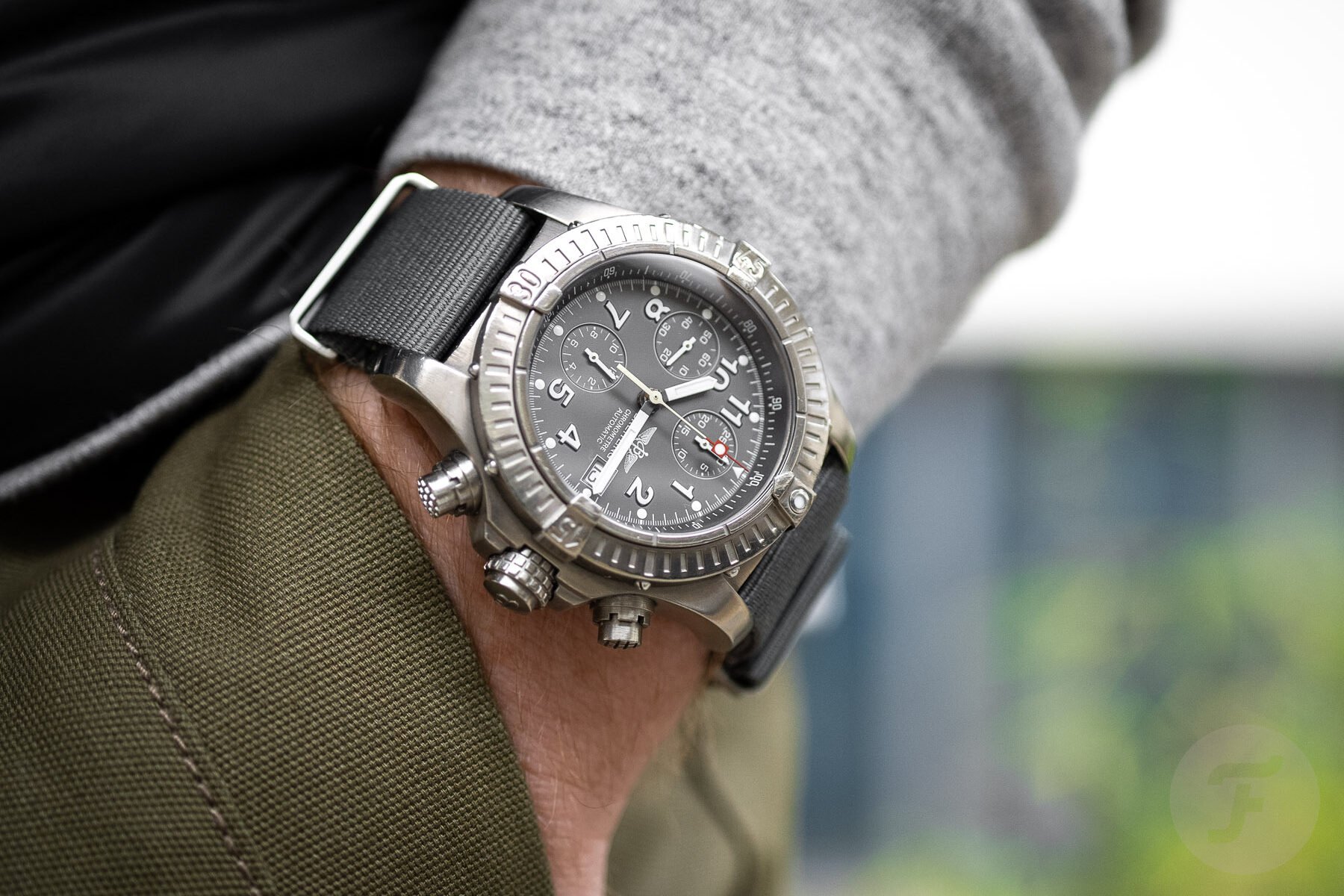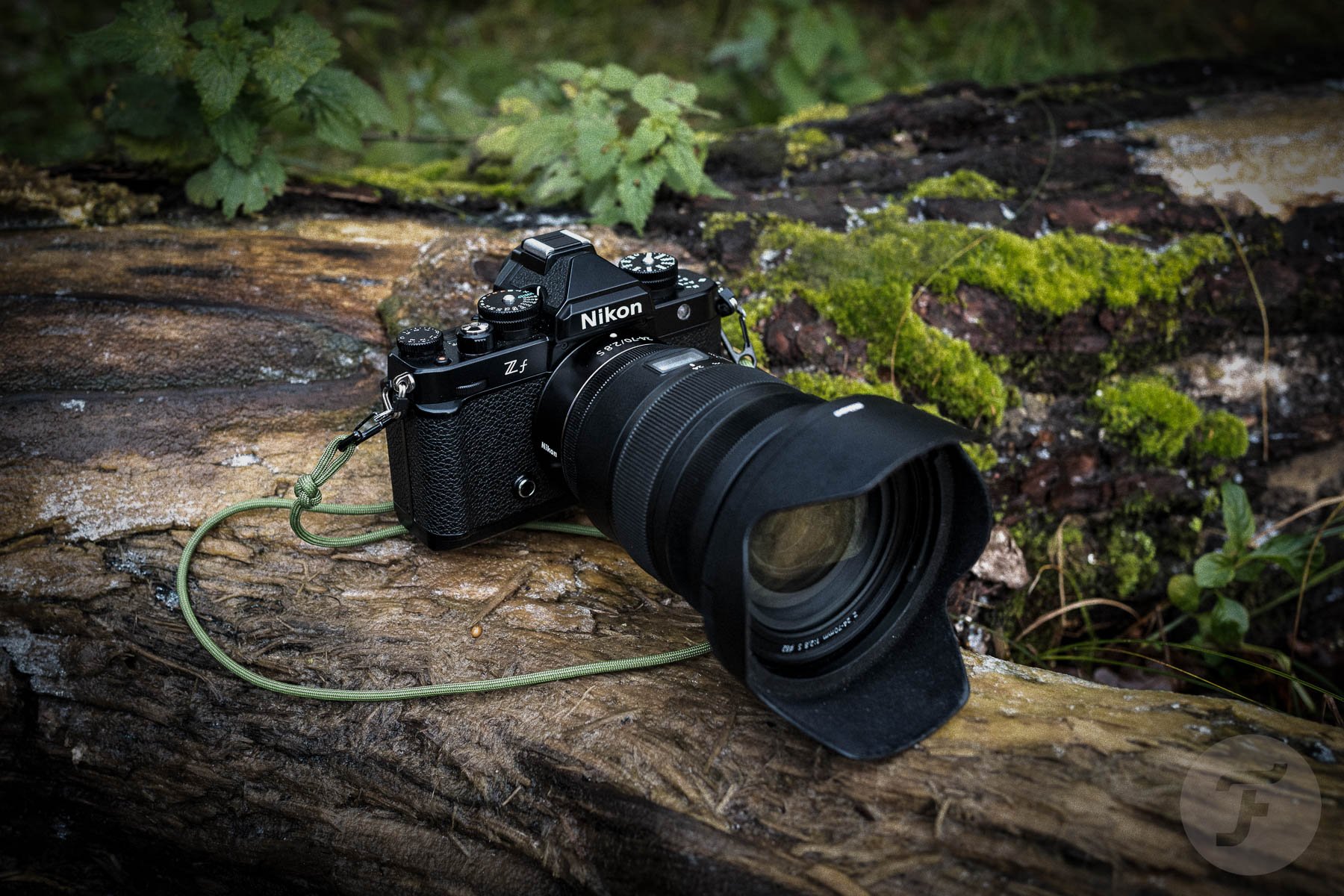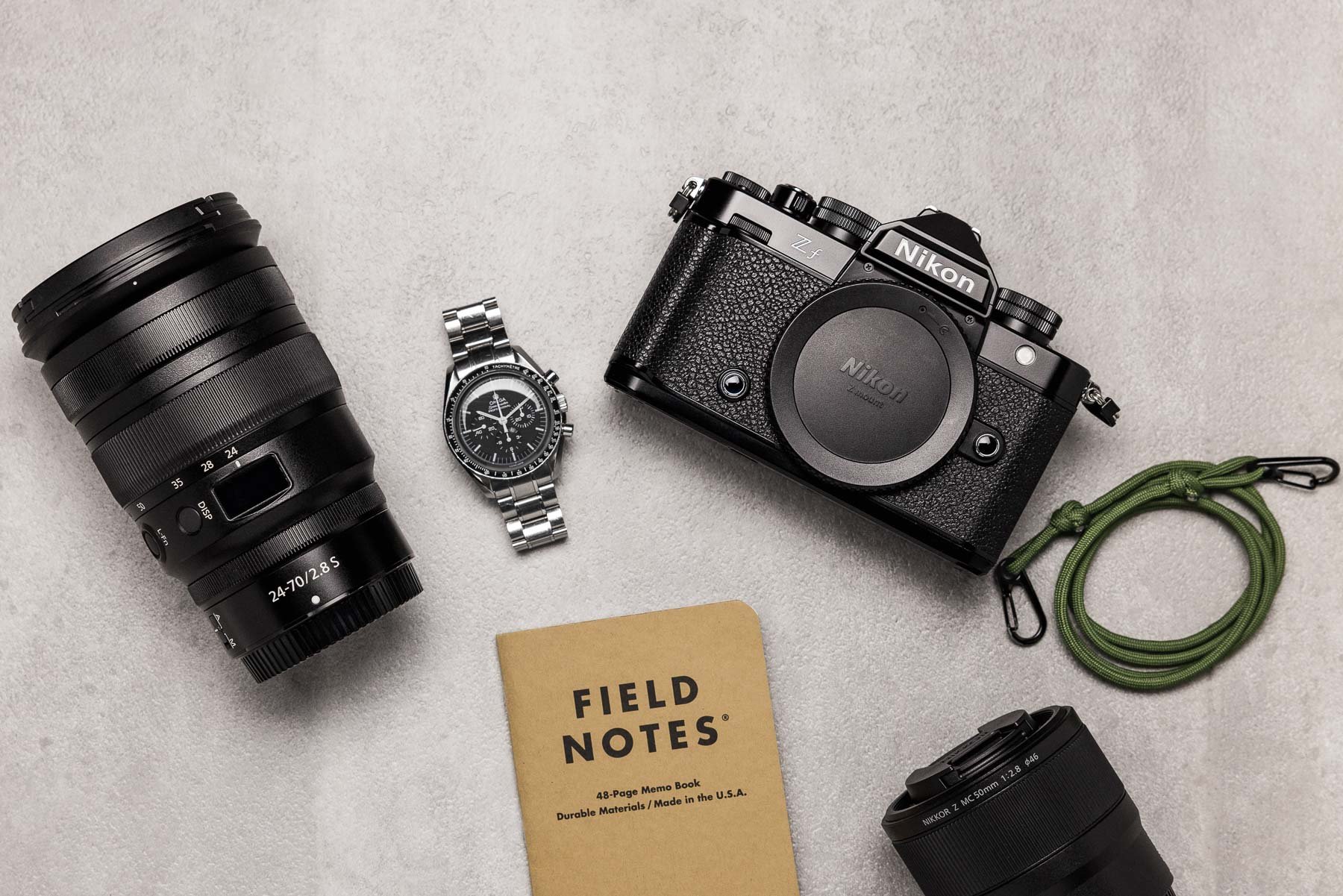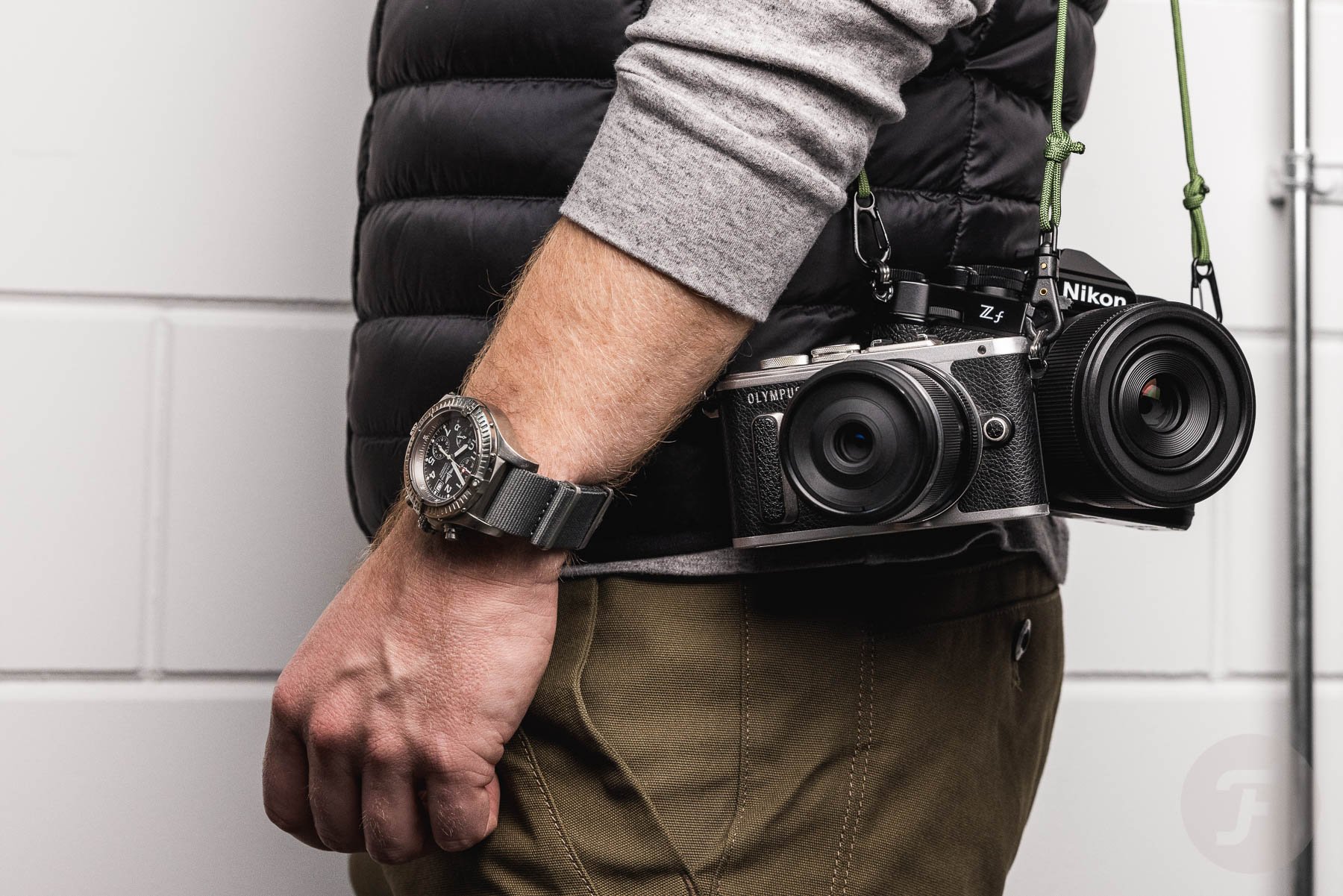Watch Photography With The New Nikon Zf — A Hands-On Review
Watches and photography are two fields of interest that inexplicably and inevitably attract the same kind of like-minded enthusiasts. That’s why some of you may very well be keen to hear about my experience with the new Nikon Zf. Released to the public in October of this year, it’s the latest addition to Nikon’s range of full-frame mirrorless cameras. We’ll get into all things specs later on in the review. Still, for now, all you need to know is that alongside the camera body, I was well-equipped with the Nikon Nikkor Z 24–70mm F/2.8 S, Nikkor Z MC 50mm f/2.8, and Nikkor Z 28mm f/2.8. I swapped out my usual photography setup and got to work. A word of warning: this is going to get technical quickly. If you’re unfamiliar with photography, consider reading over the broad strokes and flicking through to enjoy the watch photos.
For me, photography and watches have not always gone hand in hand, though the fascination for both has been around for as long as I can remember. The thrill of unpacking my first DSLR (a Nikon D3100 I bought with my first salary in 2012) was equal to the more recent memory of getting my Omega Speedmaster. Both were major, meaningful purchases and felt like the start of a new chapter. It was an invitation to learn and an opportunity to grow. Picking up this latest camera from Nikon felt very similar. But setting out with a target in mind made the experience very rewarding. The first one was to put the Nikon Zf through its paces. The second was to see how it would impact my day-to-day photography working process and its output, both in the studio and on the road.
My approach to this review
Before I get into my experience with the camera, numbers, and specs, I want to give you an idea of how I put the Nikon Zf to the test. Simply put, I jumped into the deep end, leaving my usual camera at home and replacing it with the Nikon. As some might know, my usual camera is an Olympus Pen E-PL8 with the Zuiko Digital 30mm f/3.5 macro lens. Those of you who know a thing or two about cameras will realize what a different beast the Zf is in comparison. One is a 2016 Micro Four Thirds system camera with a 16MP sensor and a crop factor of 2.0. This means you must double the focal length (i.e. my 30mm f/3.5 macro is the equivalent of a full-frame 60mm f/7 macro). The other is a 2023 full-frame camera with 24MP and all the latest bells and whistles.
It’s like comparing an old Dacia Sandero to a factory-fresh Mercedes S Class. Sure, the Olympus does get me from point A to point B, but it doesn’t do so in the way the Nikon does. And though, in this case, the cameras may look similar on the outside — their designs both take inspiration from old film cameras — their performance sets them apart. As you might imagine, though, primarily shooting watches as part of my job here at Fratello, I didn’t exactly hit the road to shoot landscapes and wildlife or even portraits. So, unlike most generalist reviews of the camera, I’ll focus on the product/lifestyle side. Oh, and though I’m sure it’s a great lens, in the end, I didn’t have much use for the 24mm, so I’ll only be covering the 24–70mm zoom and 50mm macro lenses.
Nikon Zf — First impressions
My first impressions of the Nikon Zf were somewhat mixed. In hand, the build quality of the camera is evident. Coupled with the 24–70mm lens, it was an impressive piece of kit. However, it was also slightly bigger and rather heavy. The body alone weighs 719 grams and 980 grams with the addition of the 50mm lens. Pair it with the 24–70mm zoom, and you’re putting 1,583 grams on your shoulder. Having become accustomed to shooting with my featherweight Olympus Pen E-PL8 and its 30mm Zuiko macro lens (a combination weighing in at just 512 grams), it was quite a change of pace. Compared to the setup used by Fratello’s photographer Morgan (who I must thank for having taken all the photos of the Nikon Zf itself), the Canon EOS R5, the Zf was about 20–50 grams lighter (body only/with the 24–70mm equivalent).
So the weight was something I had to get used to, but in practice, that did not take long. Another notable difference was the way that each camera displays the scene you are shooting and the frames you have shot. Having an electronic viewfinder (EVF) was new to me. I did have some experience with my Nikon D3100’s optical viewfinder, but this was a different beast altogether. Both the EVF and the articulating screen on the back of the camera display the image with excellent resolution. Going back to my Olympus recently, I have struggled to tell if the image I’m looking at on the screen is truly sharp. The advantages of the EVF in bright scenarios and for double-checking shots you’ve taken were also not lost on me. It did take me a while to get used to it after three years of working with a camera without one.
Second impressions
I mentioned the articulating screen on the Nikon Zf. Not only does it fold screen-side in (meaning that the screen is protected when you place the camera in your bag), but it also flips to be visible from the front of the camera. This is not something to take for granted, especially in watch photography. The low angles that small subjects often require are sometimes hard to reach while maintaining the screen in view, let alone if you are shooting the watch on your wrist. So a bright, fully articulating screen is vital, and the one on the Zf is equally sturdy and intuitive. The fact that it folds away provides additional peace of mind when traveling. You don’t want to arrive at your destination only to find a shattered screen. The screen’s touch controls are also convenient for selecting a specific focus point with just one hand.
Shooting with the camera is a thoroughly enjoyable experience. The shooting mode selector on the camera’s left side allows for quickly switching into manual mode if aperture priority isn’t giving you what you’re after. And the dedicated exposure compensation control is also handy. I mainly shot in aperture priority mode, setting the minimum shutter speed to 1/80th and selecting auto-ISO. This ensured that my shots were sharp and well exposed. In contrast to the small and well-stabilized sensor on my Olympus, I couldn’t get away with shutter speeds below 1/60th of a second as easily as I was used to. But this is to be expected with a heavier full-frame camera. Weight-wise, once I got used to the camera’s heft, the feeling became as familiar and reassuring as the quiet yet satisfyingly mechanical click of its shutter.
Ergonomics and controls
This is the first section where we run into some issues. But before we get to those, let’s start with the positive. I mentioned some of the camera’s physical interface already. The ISO, shutter speed, and exposure compensation wheels are made of brass, and they are a joy to operate. However, I mostly interfaced with settings via the wheel in front of the camera to change the aperture. The Nikon Zf has a small digital display on top showing the aperture setting, which is convenient for quick reference. I found that I would rather have the exposure compensation dial feature a locking mechanism than the shutter speed counterpart. This is due to its less sheltered placement away from the central “hump” of the EVF and closer position to where the thumb naturally rests.
In my two-week test period with the Nikon Zf, the only issue I ran into was its ergonomics. I found that the camera prioritized emulating the retro looks of the Nikon FM2 from the early ’80s over user comfort. You could argue that the entire point of the Zf lies in its aesthetics and charming presence. But for the size and weight of the camera, the level of grip was a bit lacking. A protruding thumbrest was nonexistent, and the front grip was too narrow. The placement of the shutter button was also not ideal as it did not sit where the user’s index finger would naturally land when comfortably gripping the camera. However, the shape of the Zf doesn’t provide an alternative location.
Additionally, I had to disable the programmable button beside the lens as my natural grip position constantly caused it to activate. All these issues do not exist in other Z-series cameras, which have a well-established, modern grip shape and downward-sloping shutter button.
Shooting with the Nikon Zf
As previously mentioned, I used only the 50mm macro and 24–70mm zoom lenses. These felt like the best fit for the kind of shooting I do, with the 24mm being slightly too wide of a lens for the close-up work of photographing watches. This two-lens setup is very similar to what Morgan uses, and it covers almost all the bases. The 50mm accurately depicts the subject, famously emulating the field of view of the human eye. The 24–70mm zoom works for everything else, from a wider field of view to a light zoom for cropping in close. It’s a very versatile lens, and at f/2.8, it allows plenty of light to shine in regardless of the zoom setting. I did develop a slight preference for the 50mm f/2.8 as it was sharp, light, and, thanks to its macro mode, allowed me to get in nice and close.
I found the aperture priority mode did a good job, even in low-light settings. Here, even with the ISO cranked well above what I would expect would give a decent result, the pictures came out with relatively low noise thanks to the BSI CMOS sensor. The camera’s weather-sealed construction inspired confidence both during a drizzly photo walk in the dunes near The Hague as well as during a downpour in the Spanish city of Toro. But it did equally well in the studio, where the grid view and leveling settings came in handy for attempting perfectly composed and level shots. The battery lasted about two days of shooting, including several prolonged Wi-Fi transfer sessions. Much to my delight, any USB-C charger can quickly top it off without needing to remove it. Having one less thing in the camera bag is always a big plus.
Image processing and file sharing
Navigating the menus was quick and intuitive. I didn’t waste any time reading the extensive instruction manual, and I was able to figure out everything I set out to achieve without any trouble. This was, primarily, to set the minimum automatic shutter speed, the shooting mode to its highest settings, and the file output to RAW. Even setting up Wi-Fi file transfer to my phone (which was both significantly quicker and able to transfer RAW files) was relatively easy. The full 24MP sensor gave me large files with a level of detail I had never experienced. Cropping was not an issue, with the images losing minimal detail and letting me get away with much more than I’m used to. Sure, the files were also larger, but Lightroom handled them without any trouble.
In fact, I found that the color profile of the Nikon Zf was excellent. Looking at images from Sony, Canon, Olympus, and Nikon side by side, my preference drew me to the Nikon. This is not something to take for granted in product photography. Ultimately, you’re aiming for accuracy first, so getting the colors right before you even start to edit is key. One thing I didn’t account for was just how much more detail the 24MP files would give me compared to the 16MP ones I’m used to working with and the impact this would have on the quality of the final shots. They look much better when exported at the 1800 × 1200 resolution we use here on Fratello. There was nothing to fault on this side of things. The files that the camera produced did not fail to impress.
Sample images
Now, you’ve heard me wax poetic about the camera and the pictures one can take with it, but you haven’t seen too many just yet. Well, here’s where I let the pictures speak for themselves. I labeled each image to indicate the lens used to take it. With that said, I’ll let you be the judge of what the Nikon Zf is capable of:
Key takeaways from the Nikon Zf
So, before wrapping up my review of the Nikon Zf, I want to go over some key takeaways from my experience with the camera. These will apply both generally and to watch photography specifically. First, Nikon’s color rendering is fantastic. Second, the only issue with the camera was the mismatch of weight and ergonomics. Third, full-frame mirrorless cameras are always going to be your best option for getting great results at a reasonable price. Finally, you don’t need more than a camera and two lenses to be fully kitted out for general and watch photography. If I were to add a third lens to this kit, it would be a long macro, such as the Nikkor Z MC 105 mm 1:2.8 VR S.
Now, let’s talk prices. The Nikon Zf has a price tag of €2,499. The 50mm macro will set you back €535, and the 24–70mm has a price of ~€2,100. These are the European prices as of December 2023 and may differ according to your region and when you read this review. If there’s anything to say about them, they seem pretty aligned with what you’d expect to pay for a camera of this caliber today. If you would like a full technical breakdown of the cameras I spoke about today, I highly recommend checking out DP Reviews’ complete overview of the Nikon Zf and my beloved Olympus E-PL8.
Final thoughts
I mentioned at the start of the article that photography goes hand in hand with watches. As it turns out, these two hobbies, passions, or professions share more than this superficial bond. Their process and timelines are very similar, at least in my experience. You start slowly and inexpensively, learning, growing, and reaching the limitations of the tools you have. That’s when you know it’s time for an upgrade. I found myself at this crossroads in photography, and my experience with the Nikon Zf opened my eyes in the same way that my first encounter with a luxury watch did. Everything from the outside finishing to the functional results was a cut above. However, as with watches, when it comes to cameras, there are many options out there, and it’s always best to try them in person before committing to one.
Is the Nikon Zf for me? In short, probably not, but that’s only because my Olympus already provides the retro appeal that the Zf offers in comparison to other Z-series cameras. I discovered that what I’m truly after is a more professional option that prioritizes functional ergonomics over the vintage aesthetics of the Zf. This was something I could have never learned without spending time with this camera.
Regarding results, the Zf does not disappoint — quite the opposite. It gave me a taste of just how good a modern mirrorless camera can be and an unshakeable feeling that upgrading my current kit is equally necessary and inevitable. Ultimately, it achieved what every camera or creative tool should do: it got me inspired and excited to get out there and create.
What do you think of the images from the Nikon Zf? Do you shoot your watches? What’s your go-to kit? Let me know in the comments section below.

